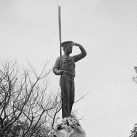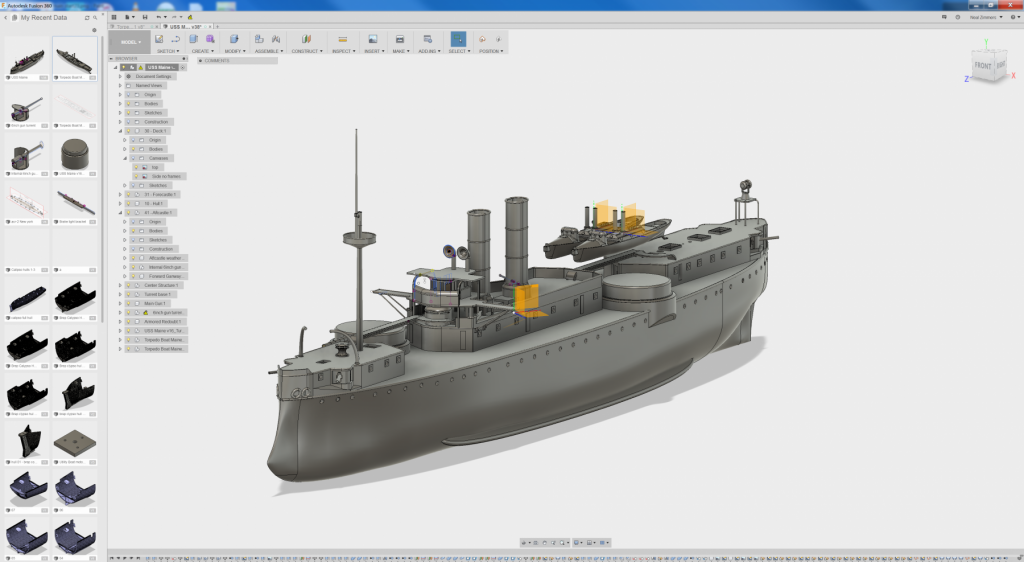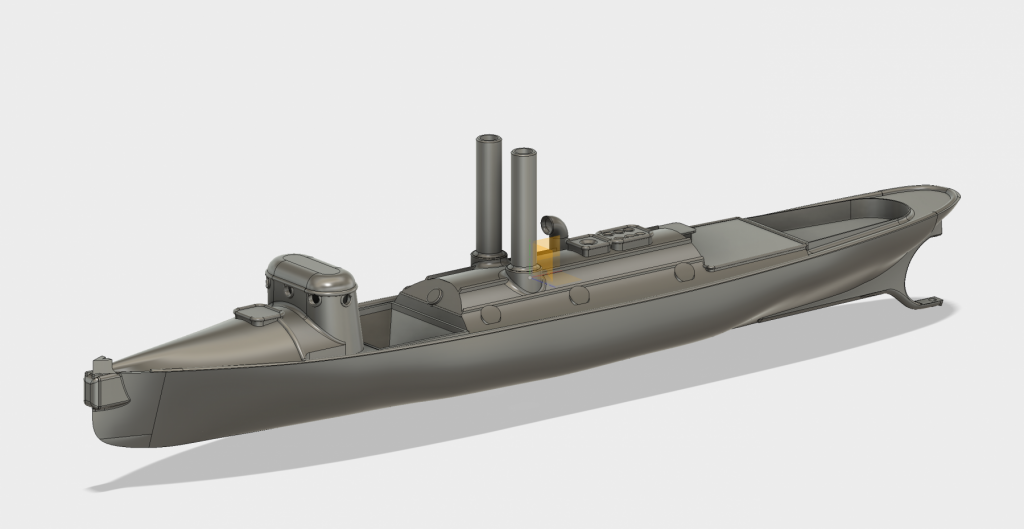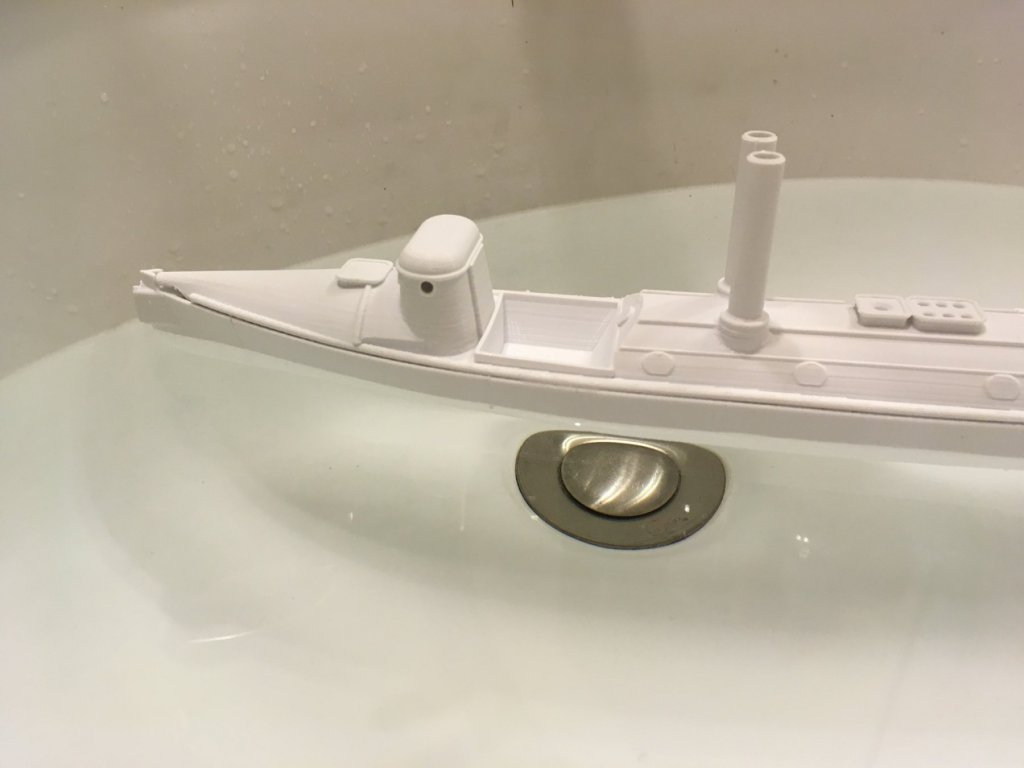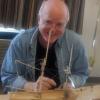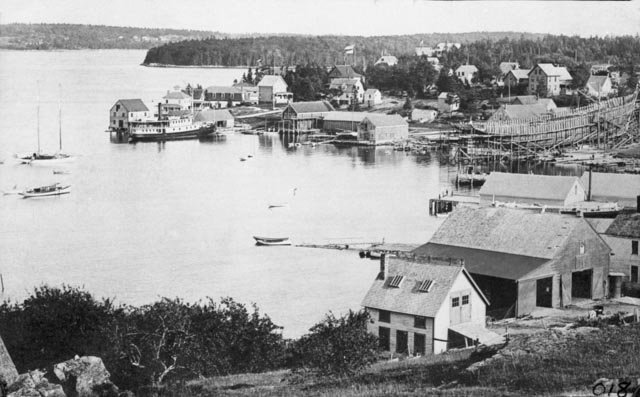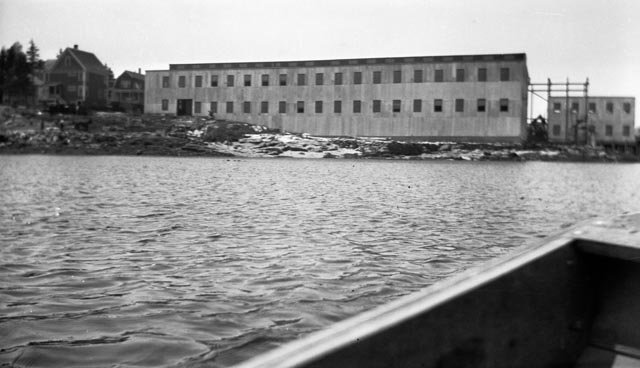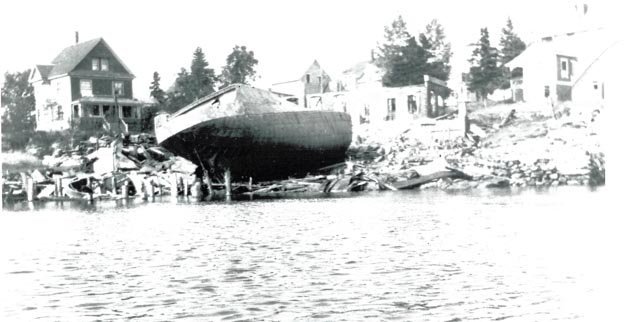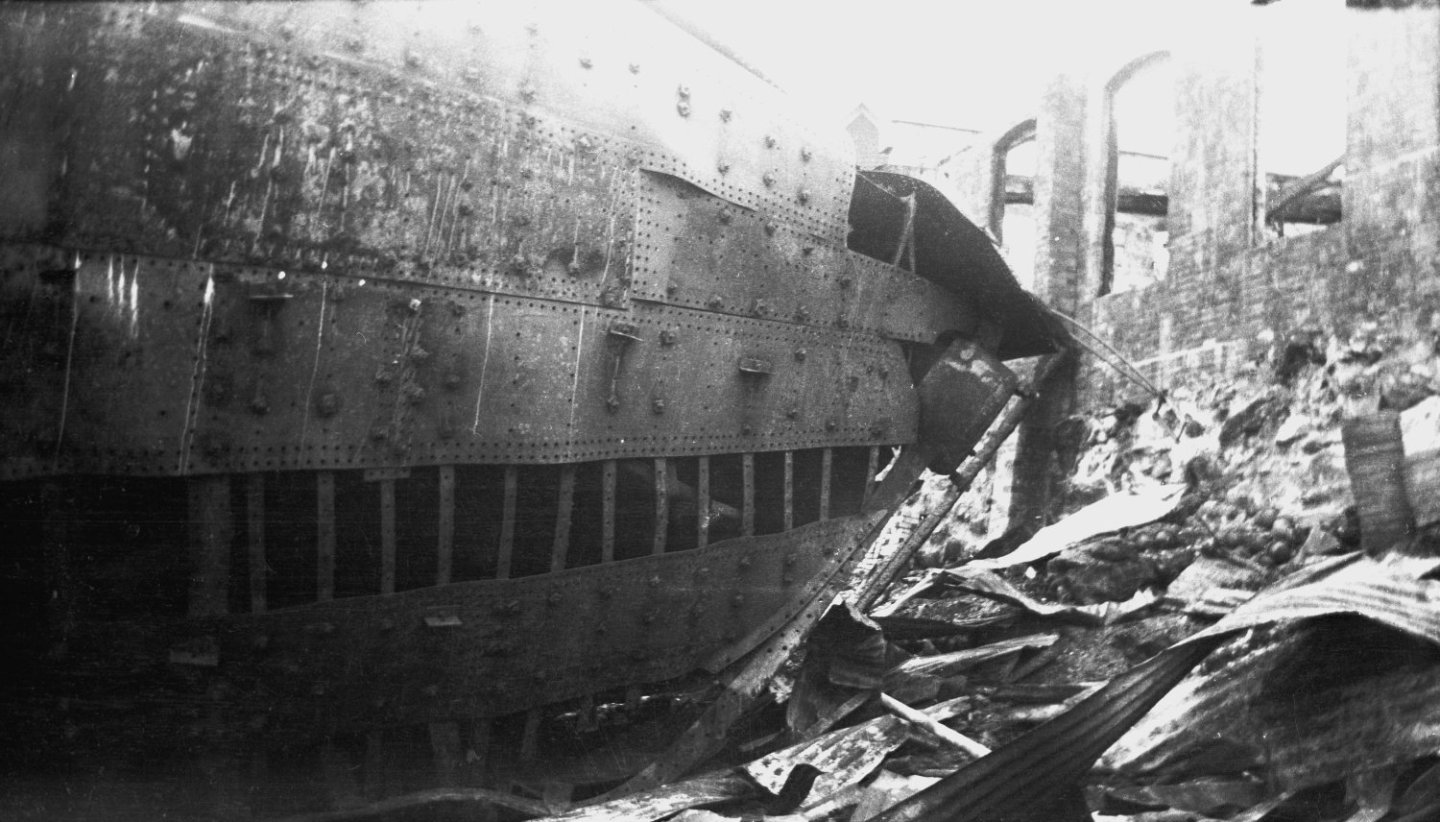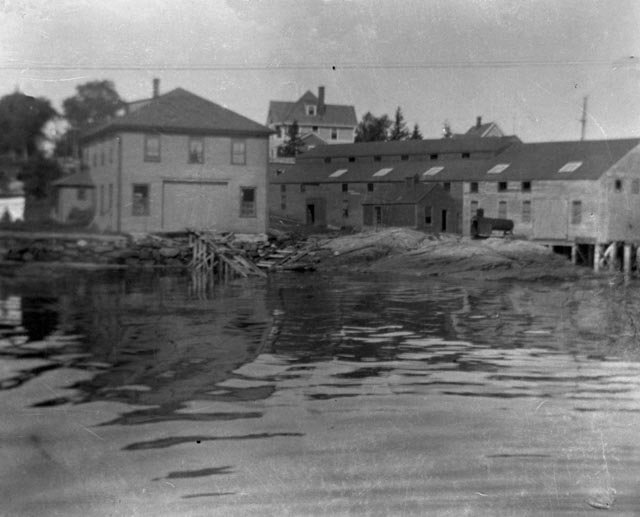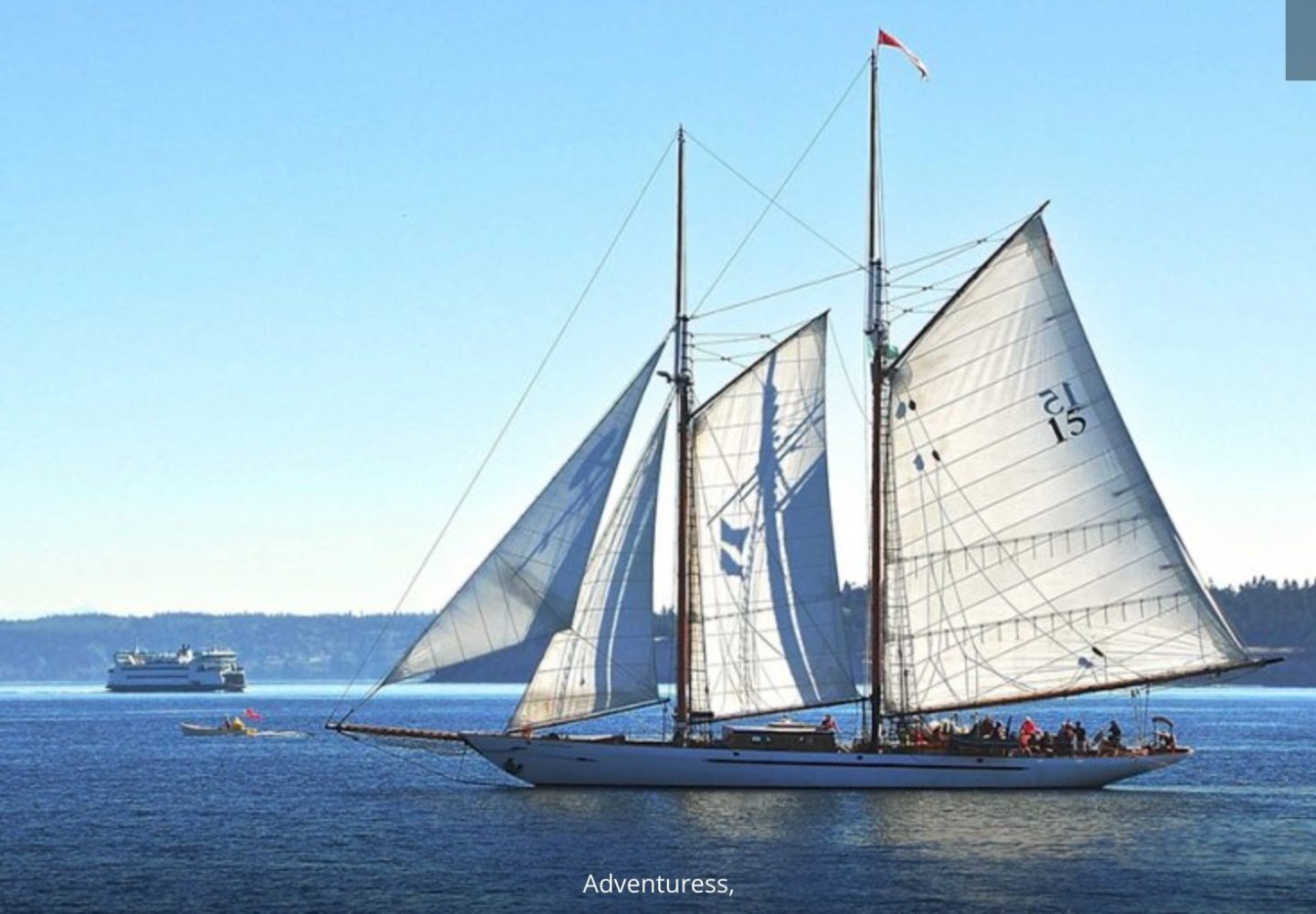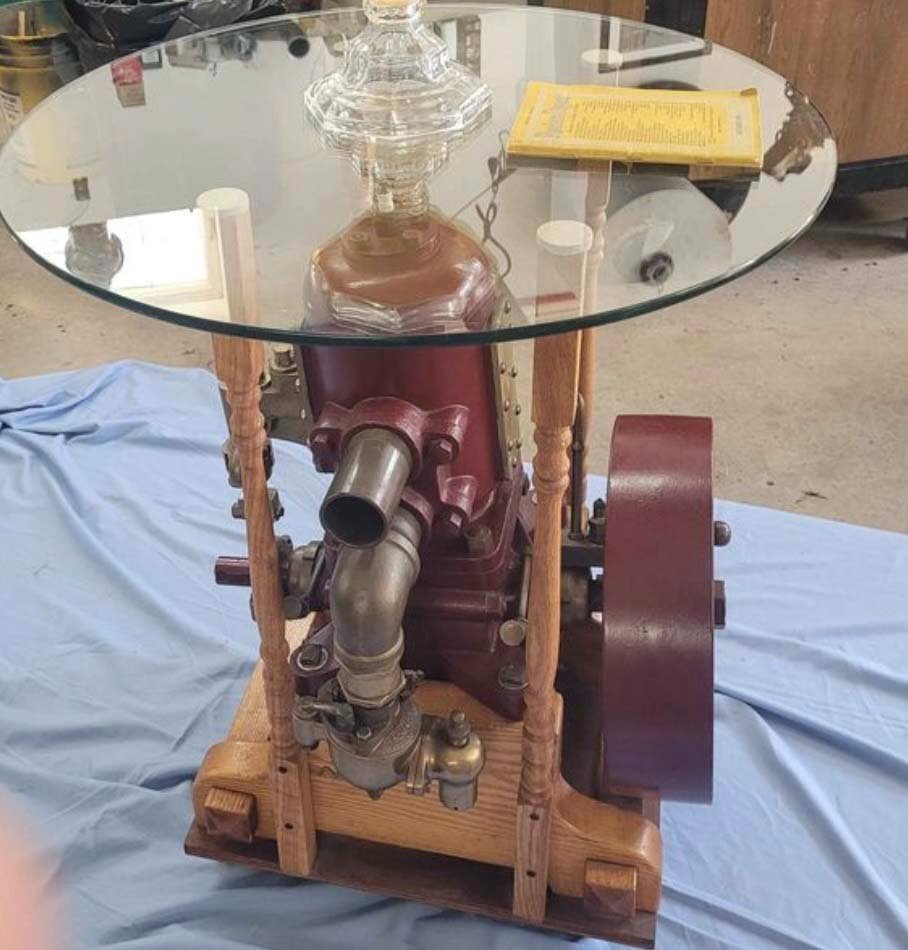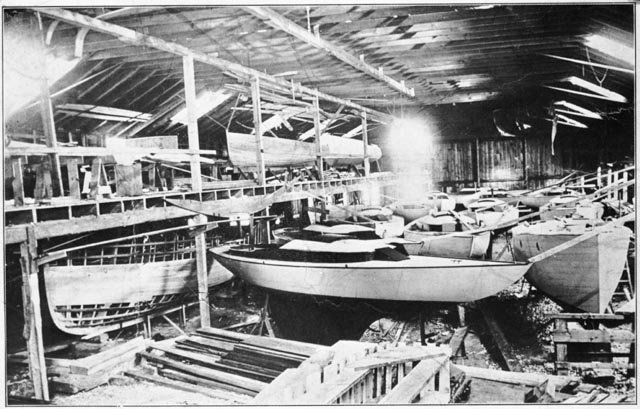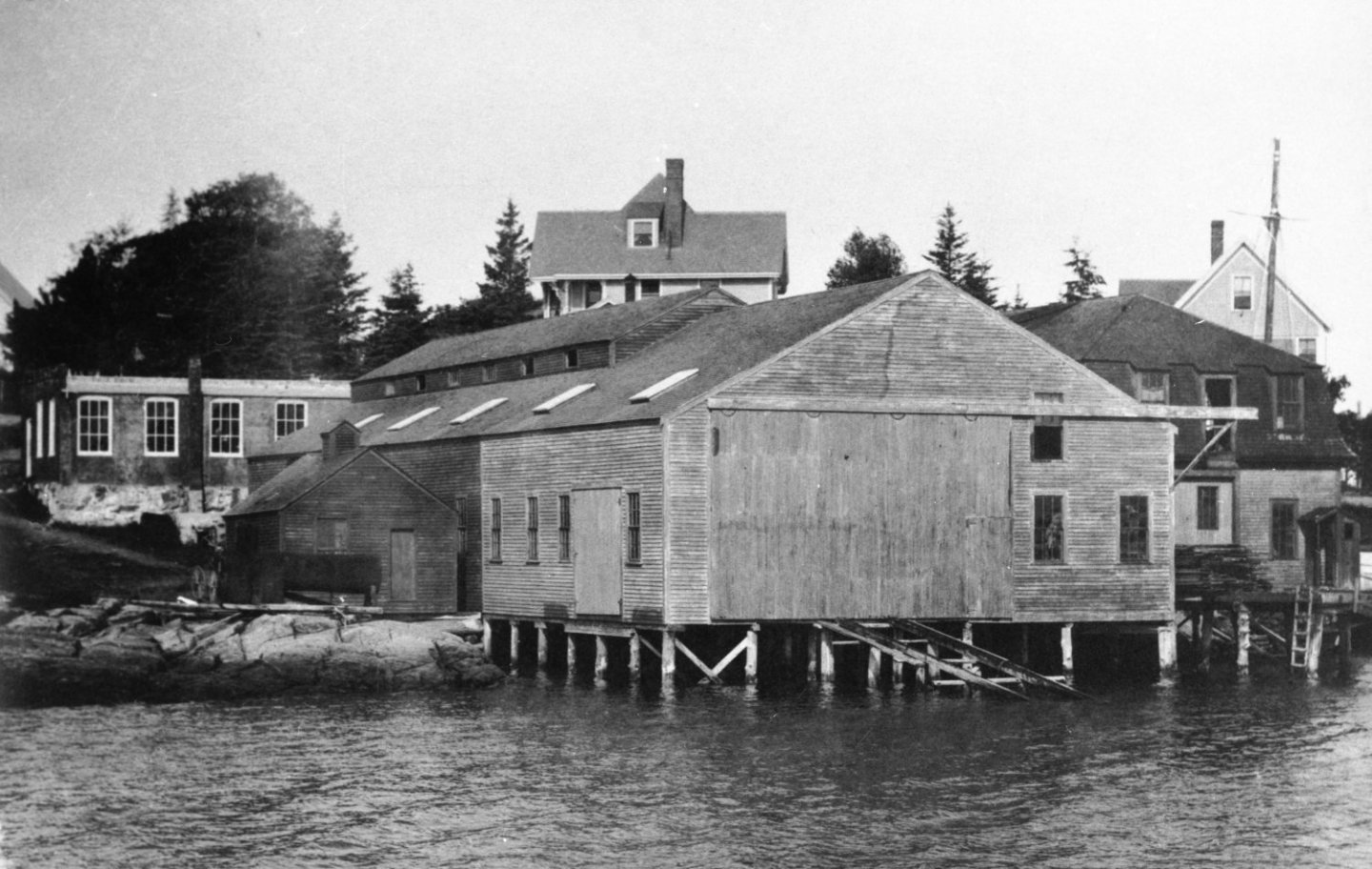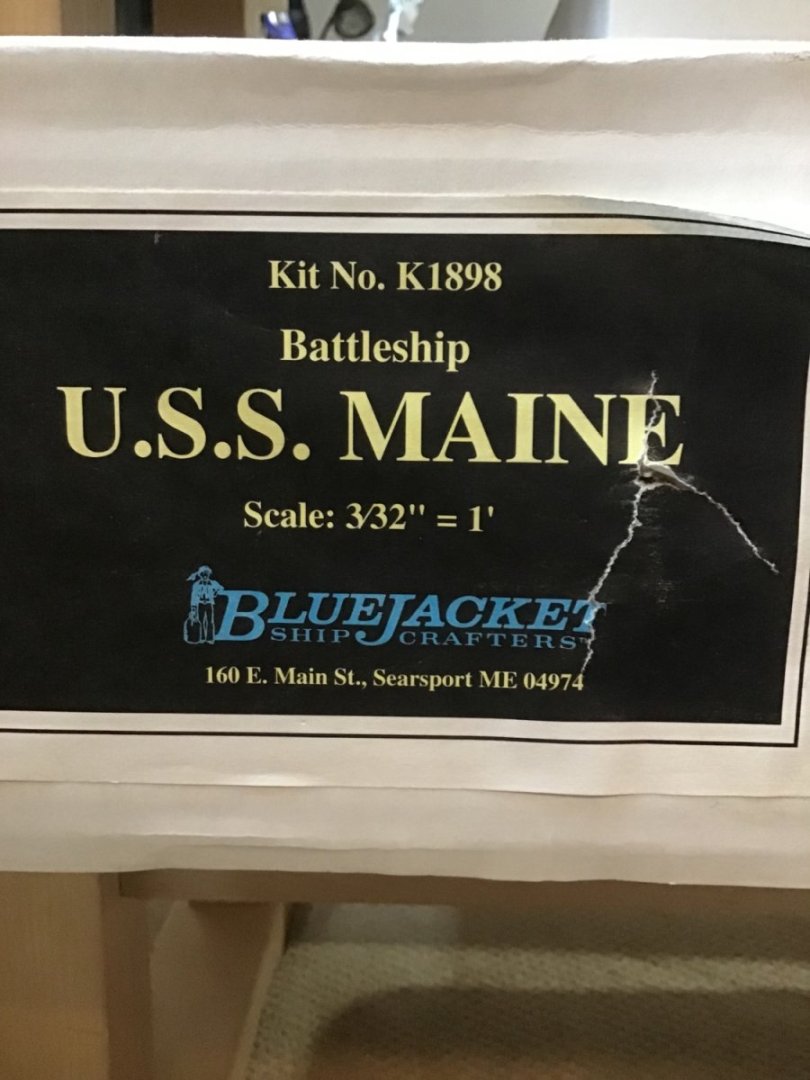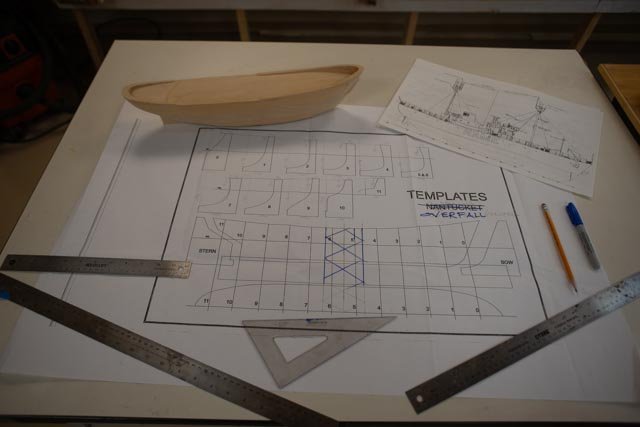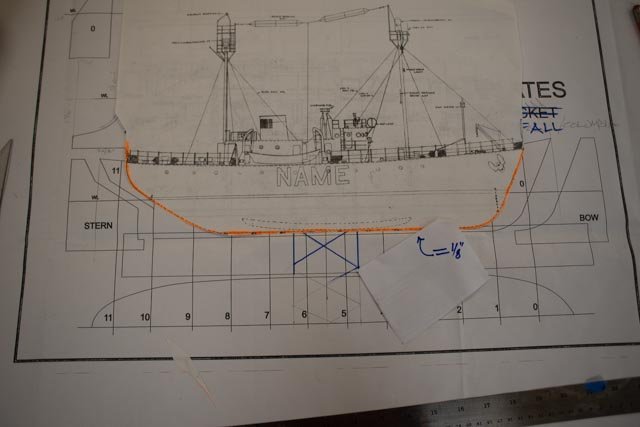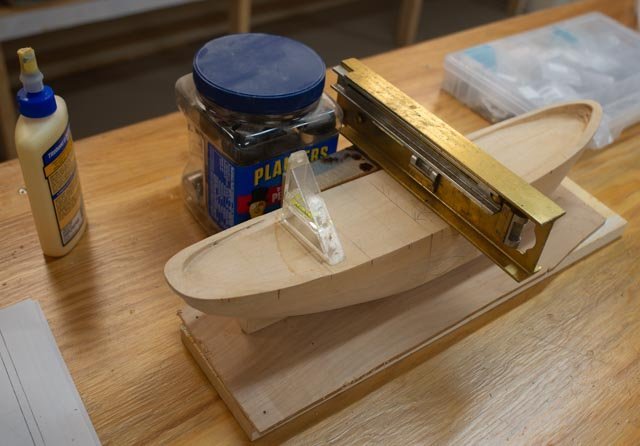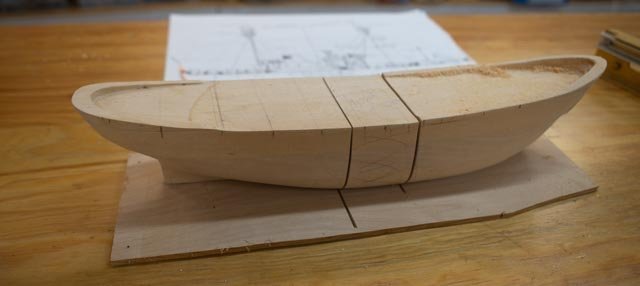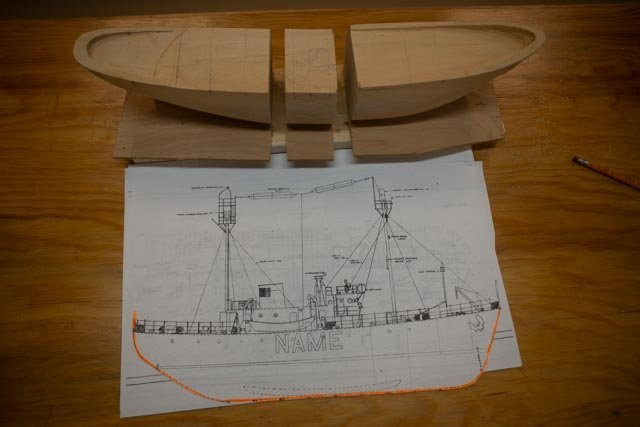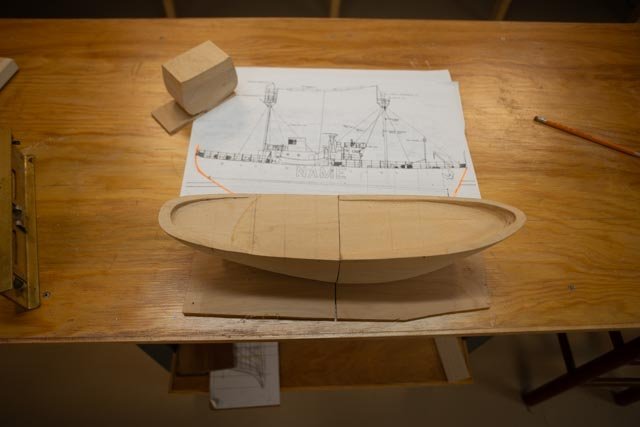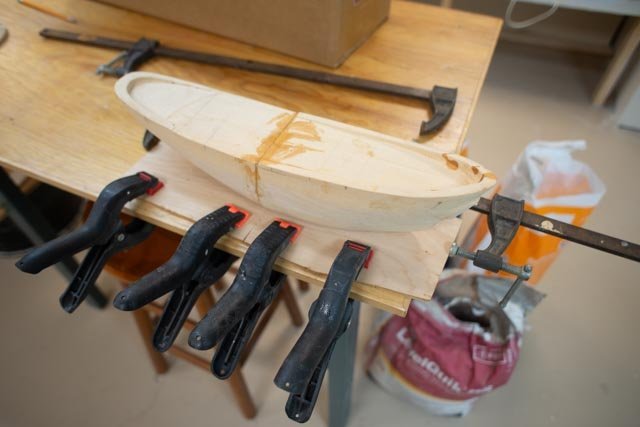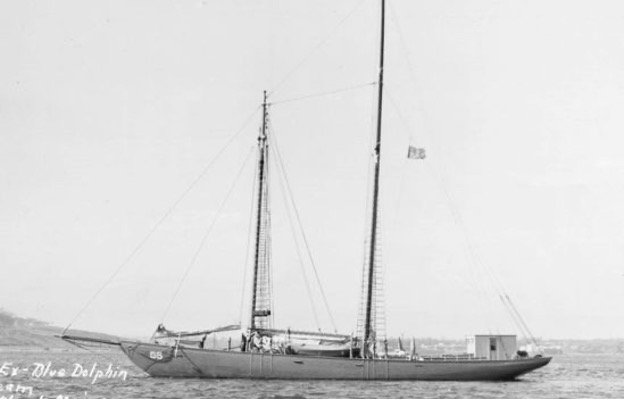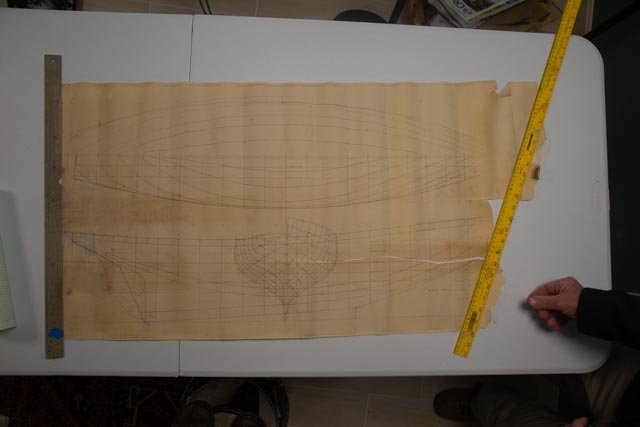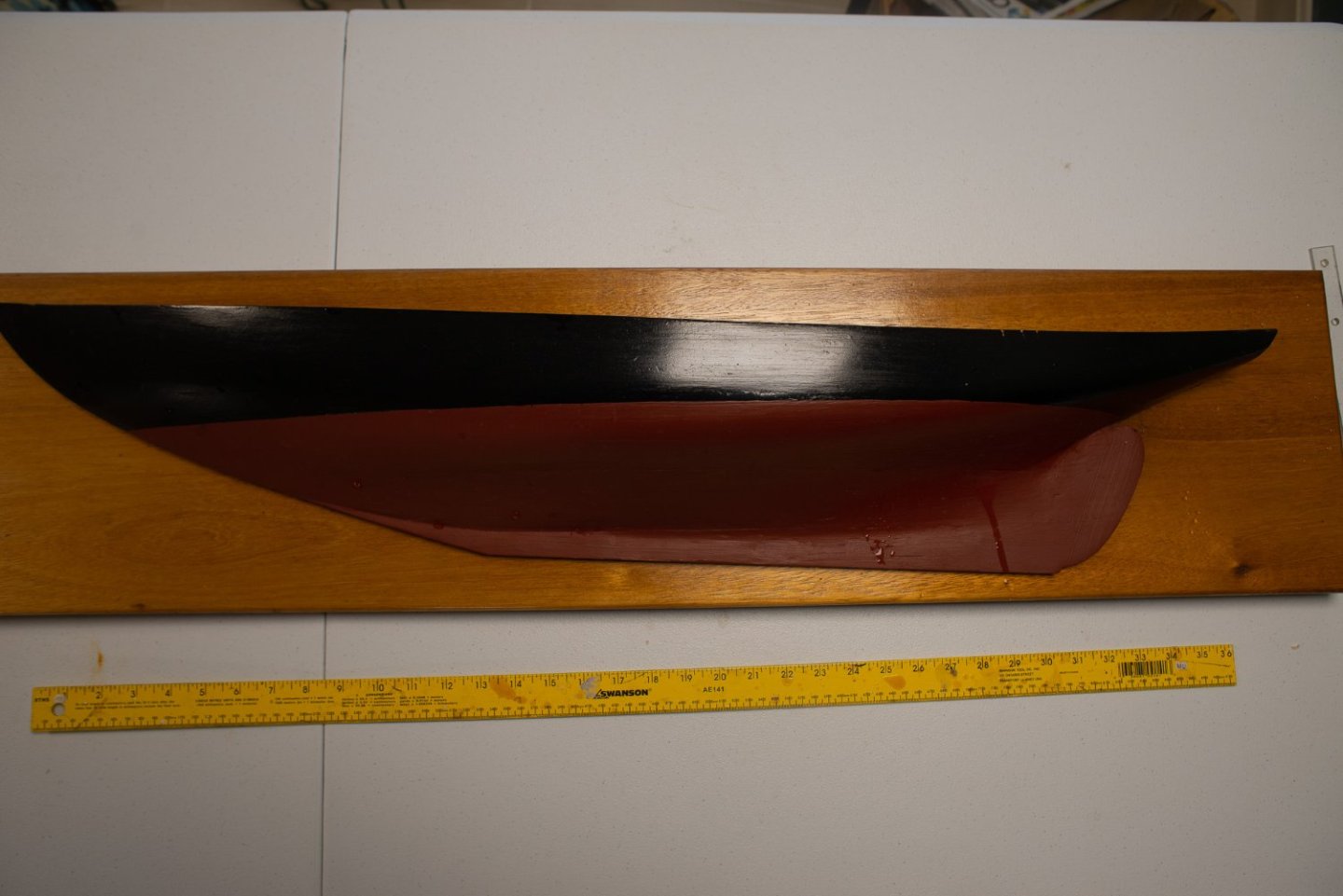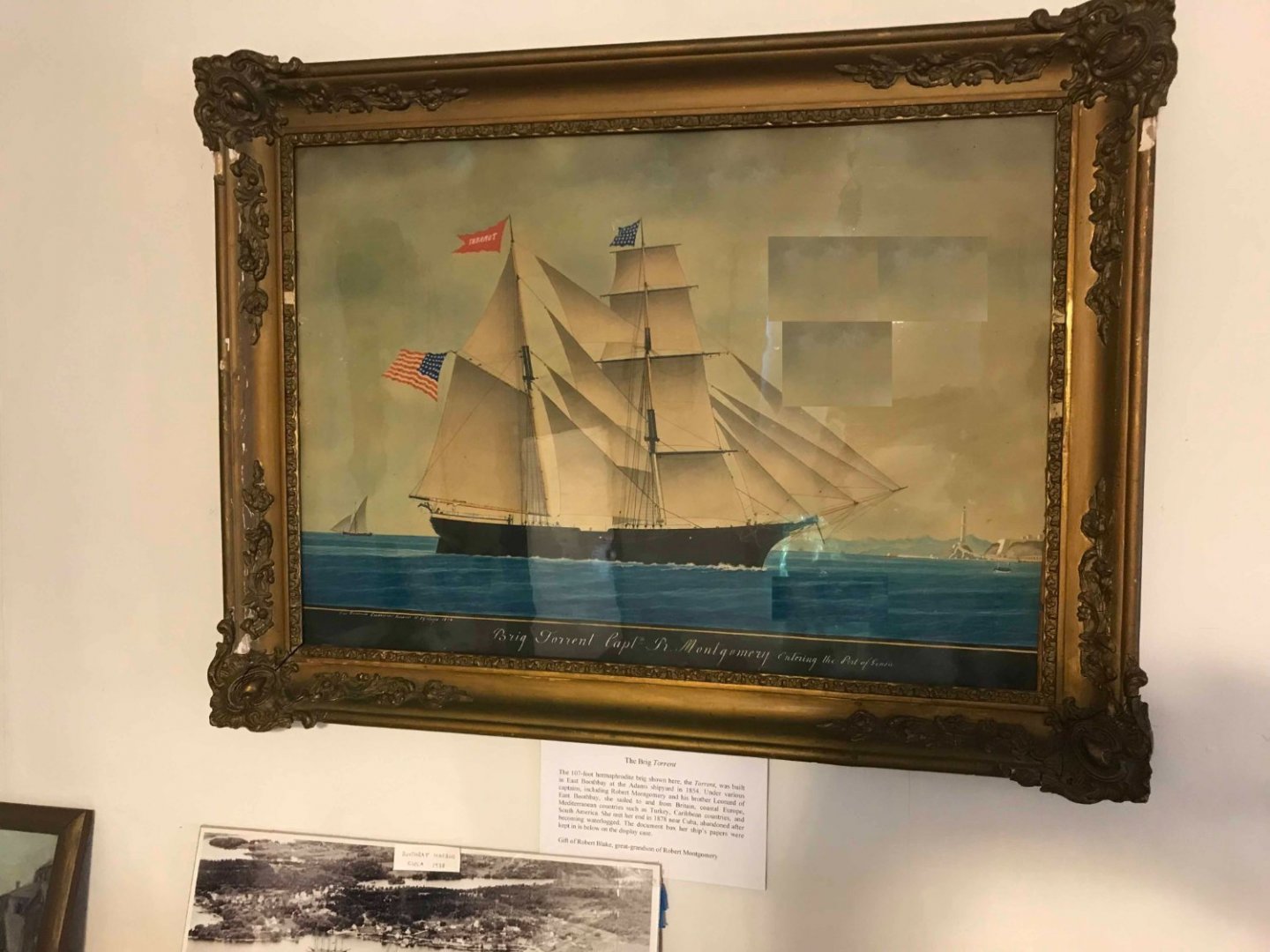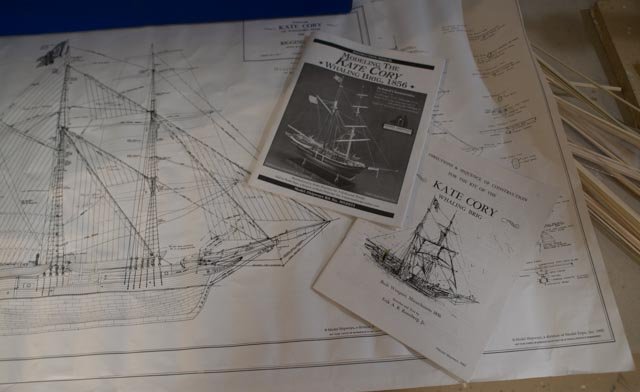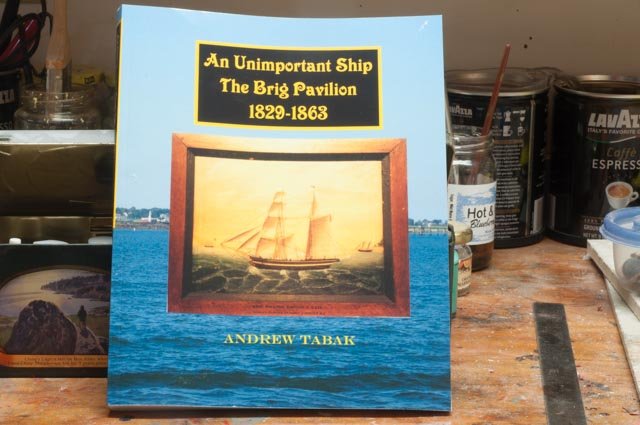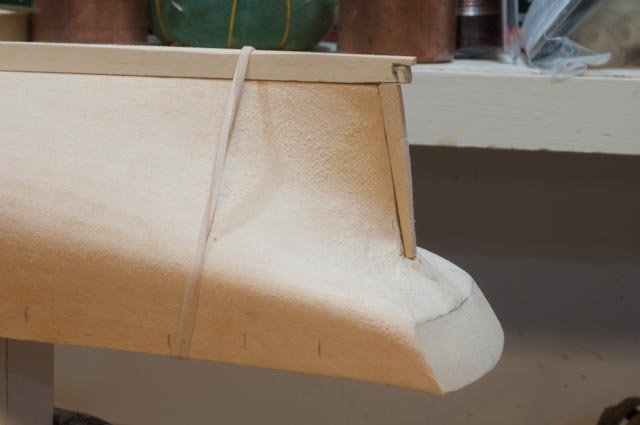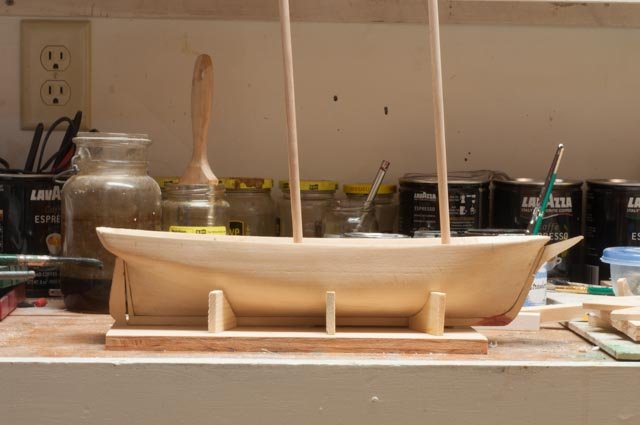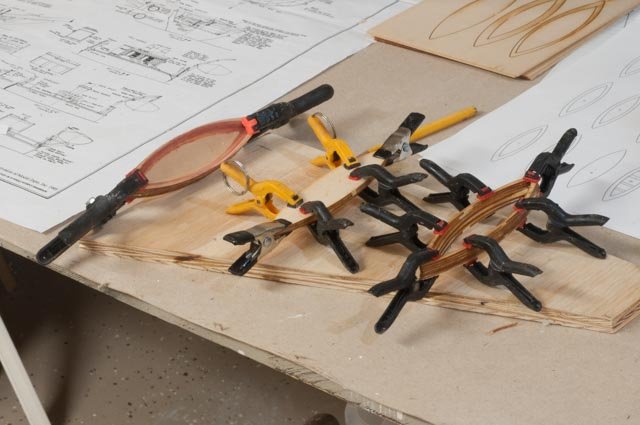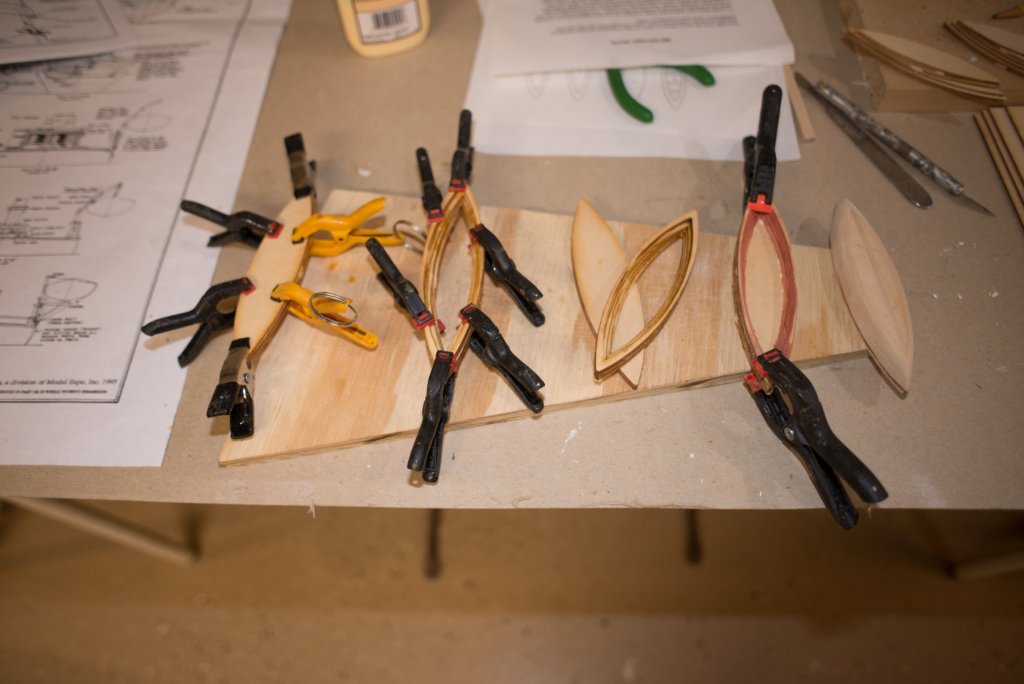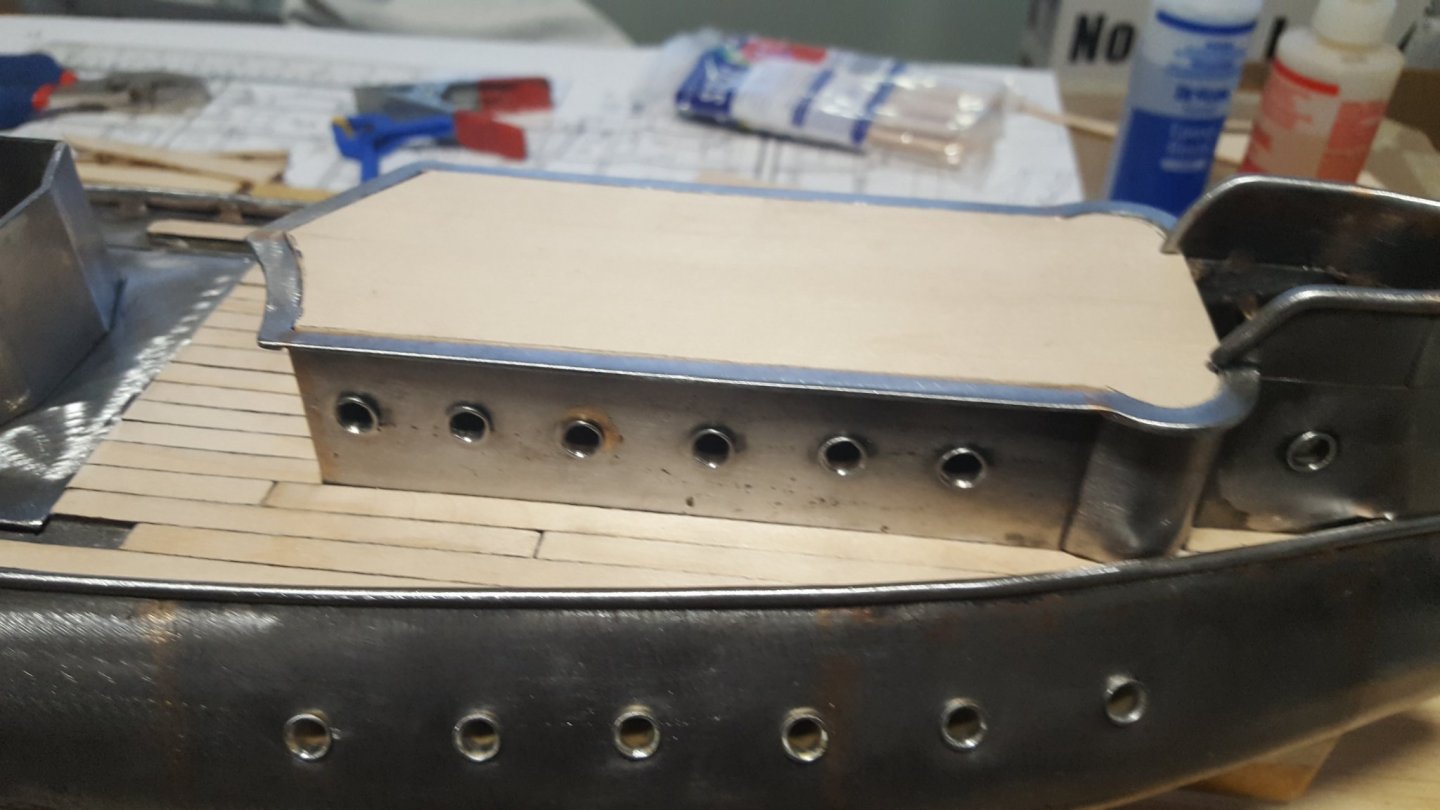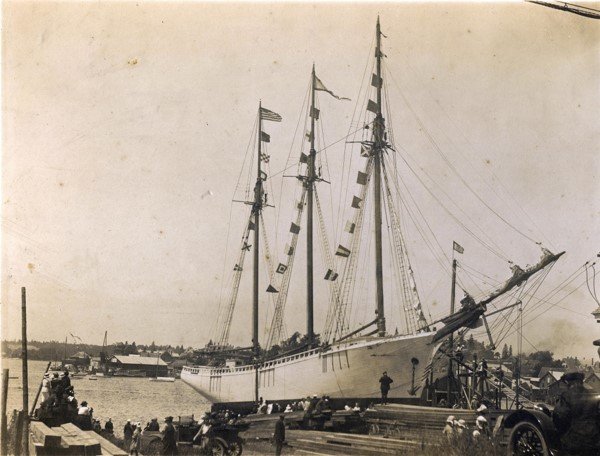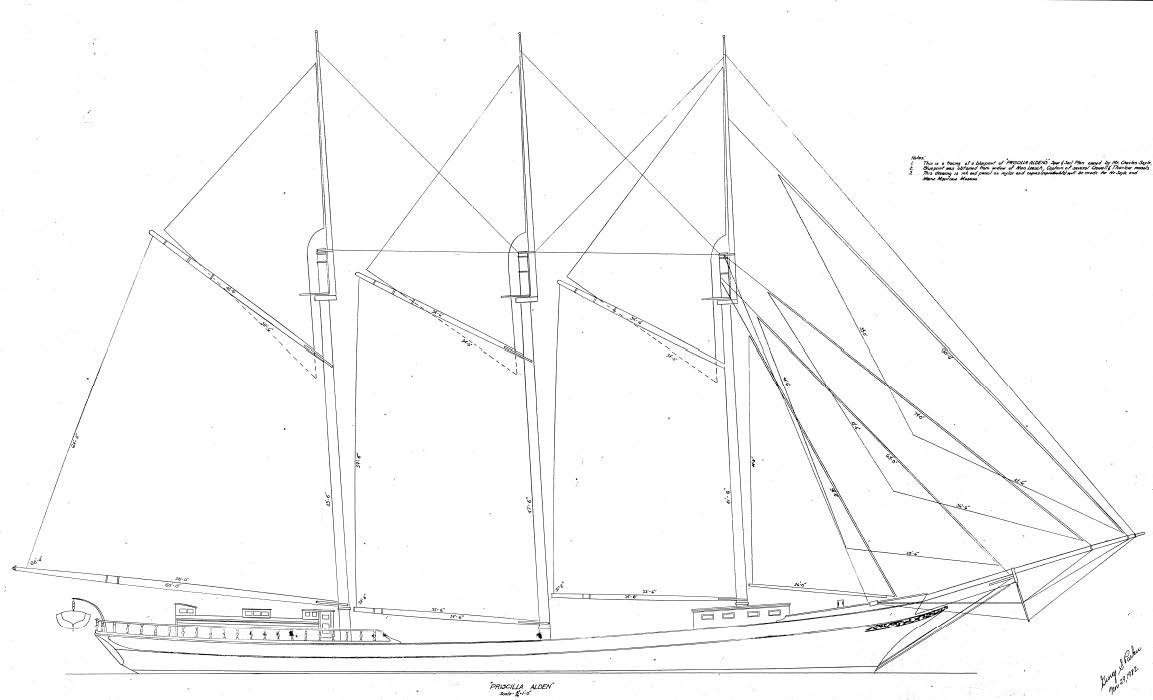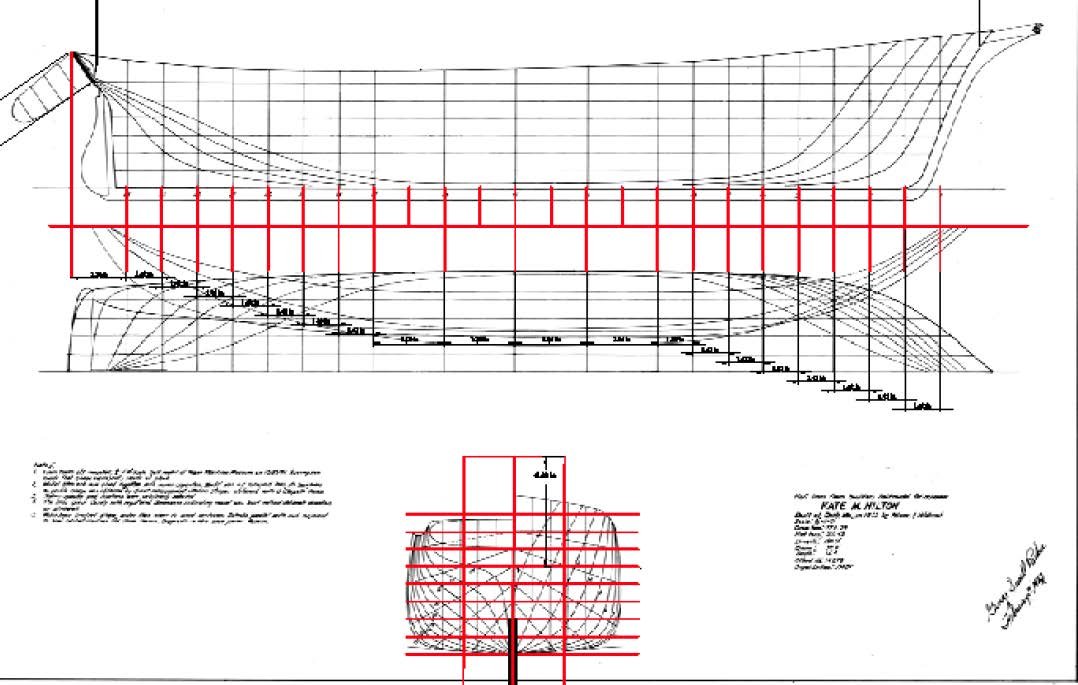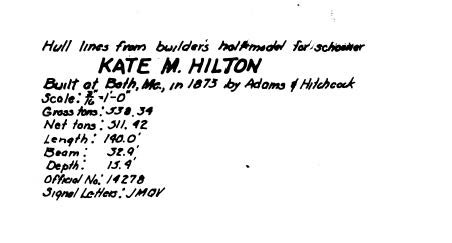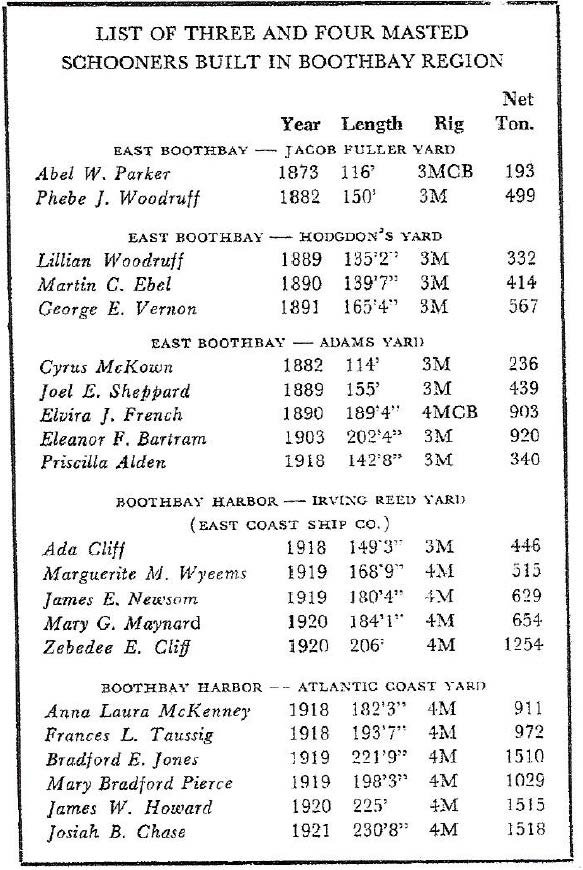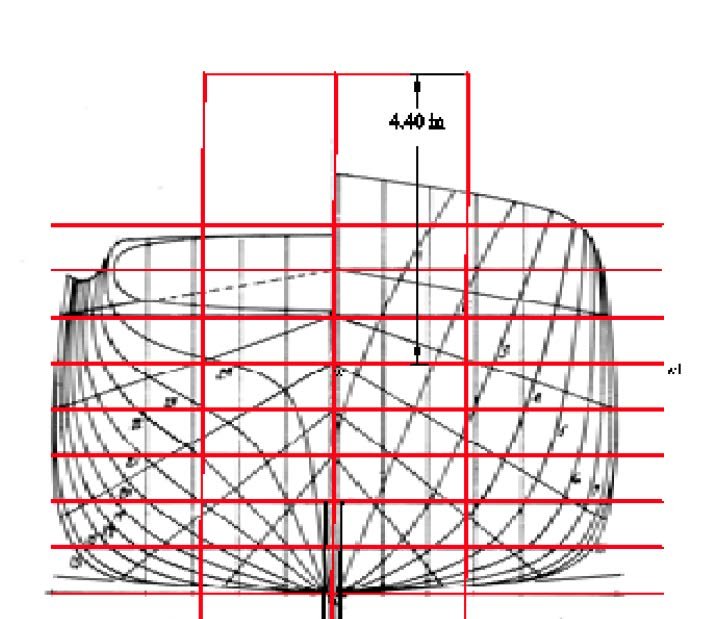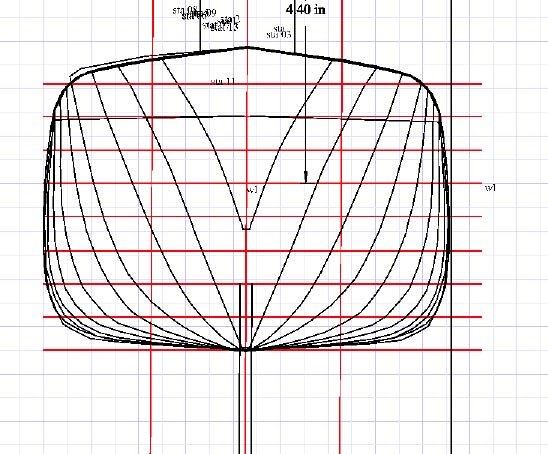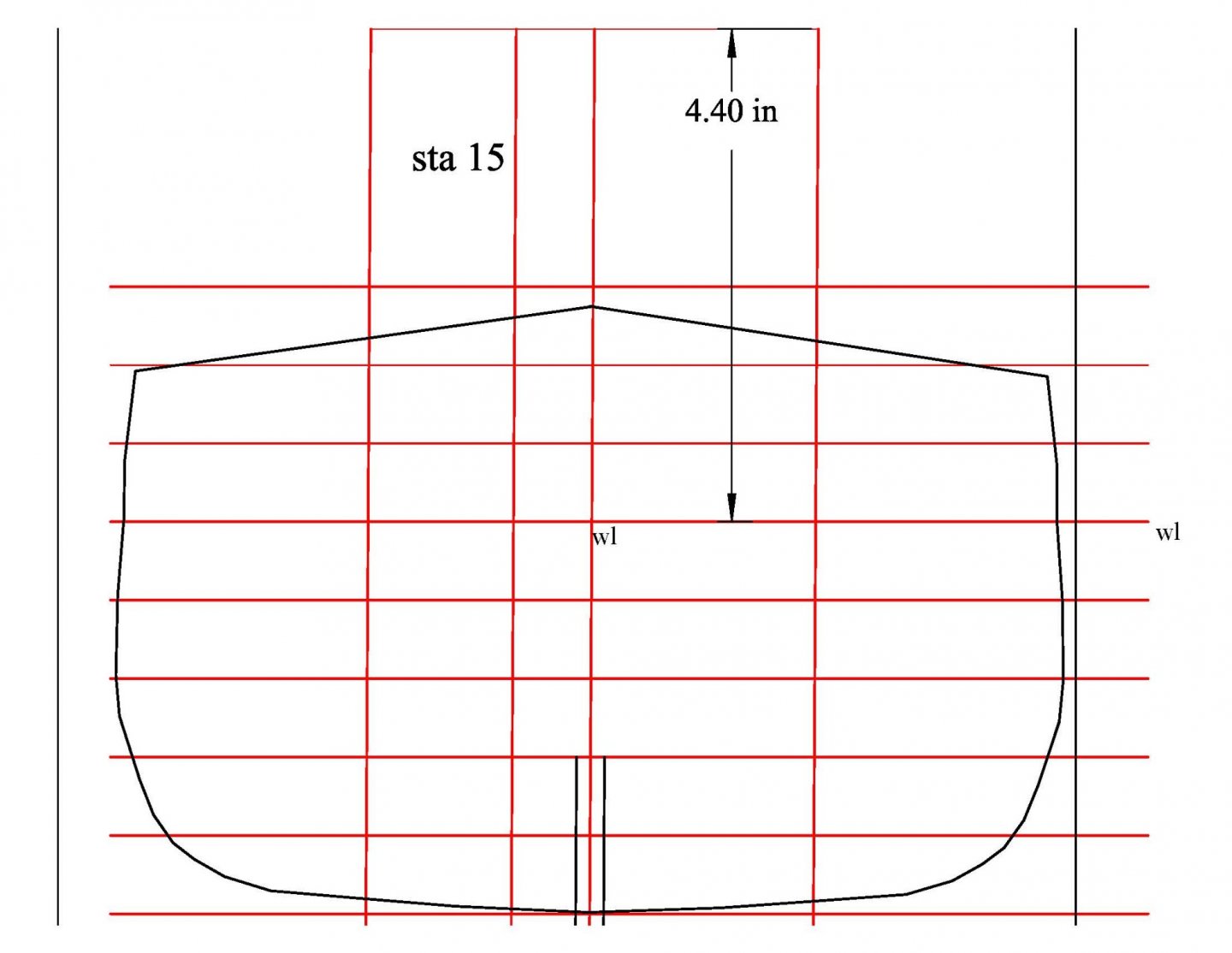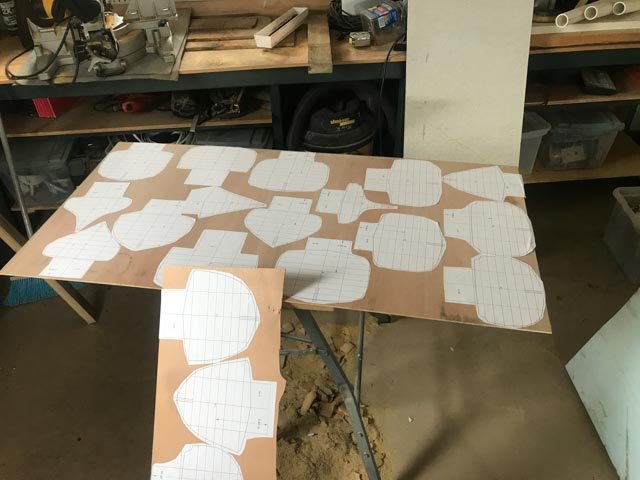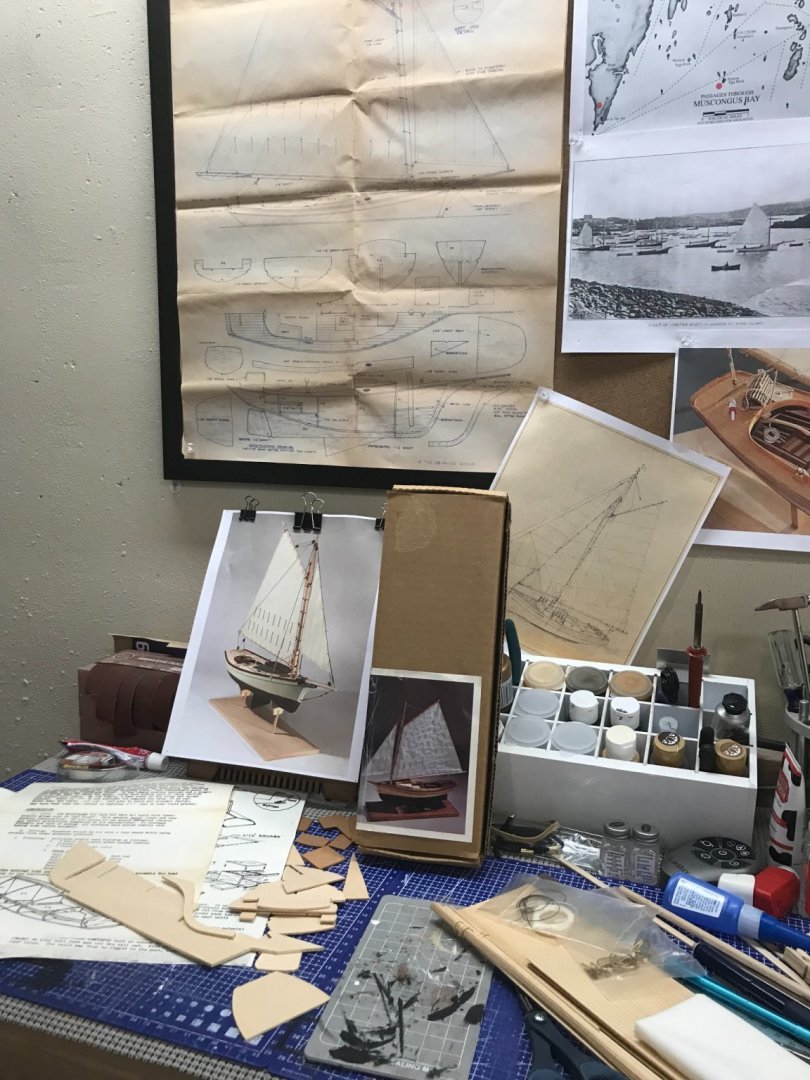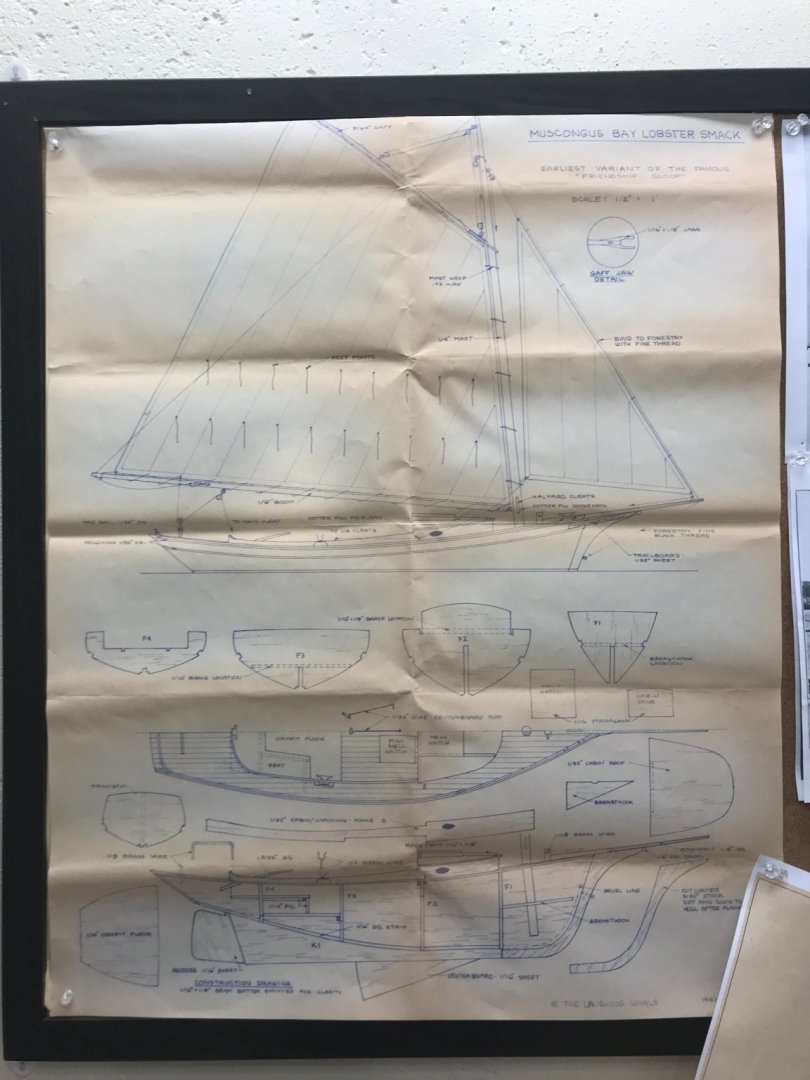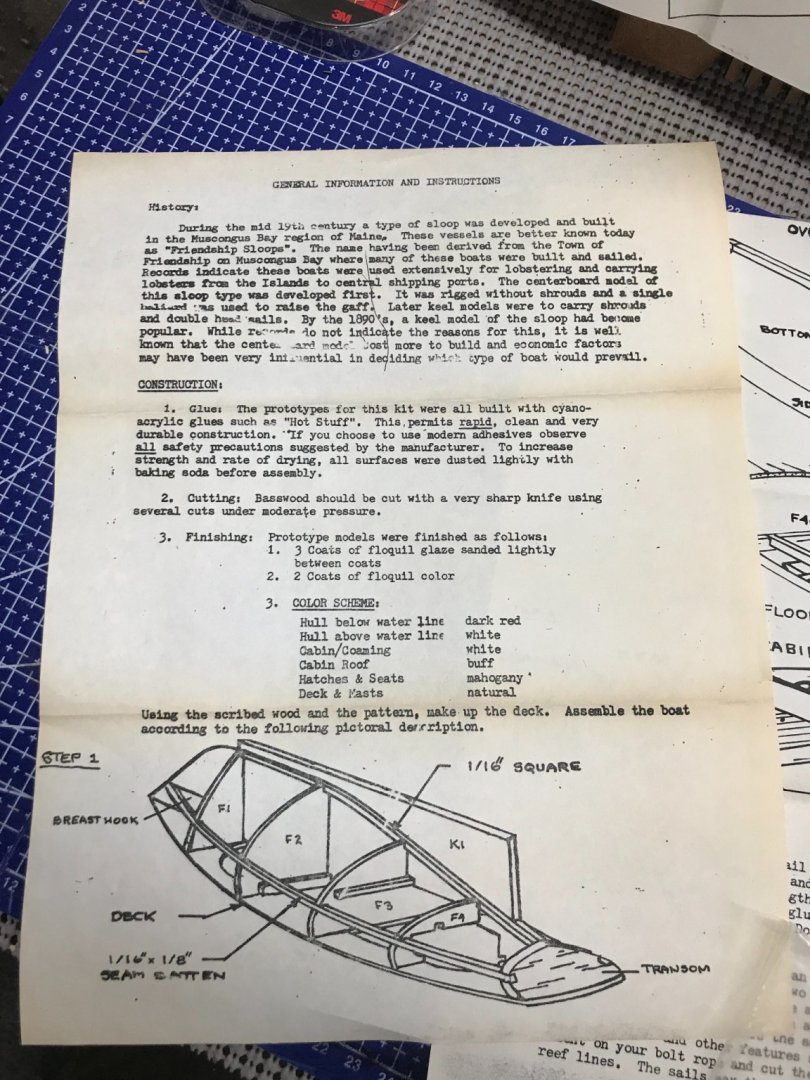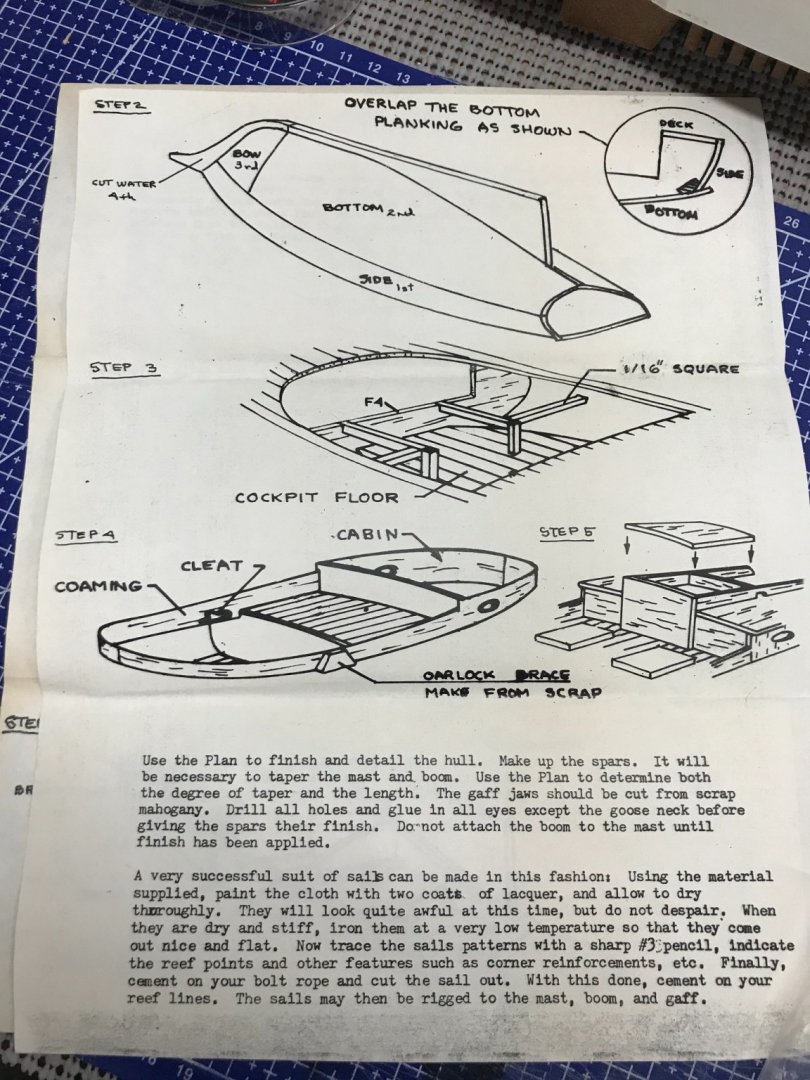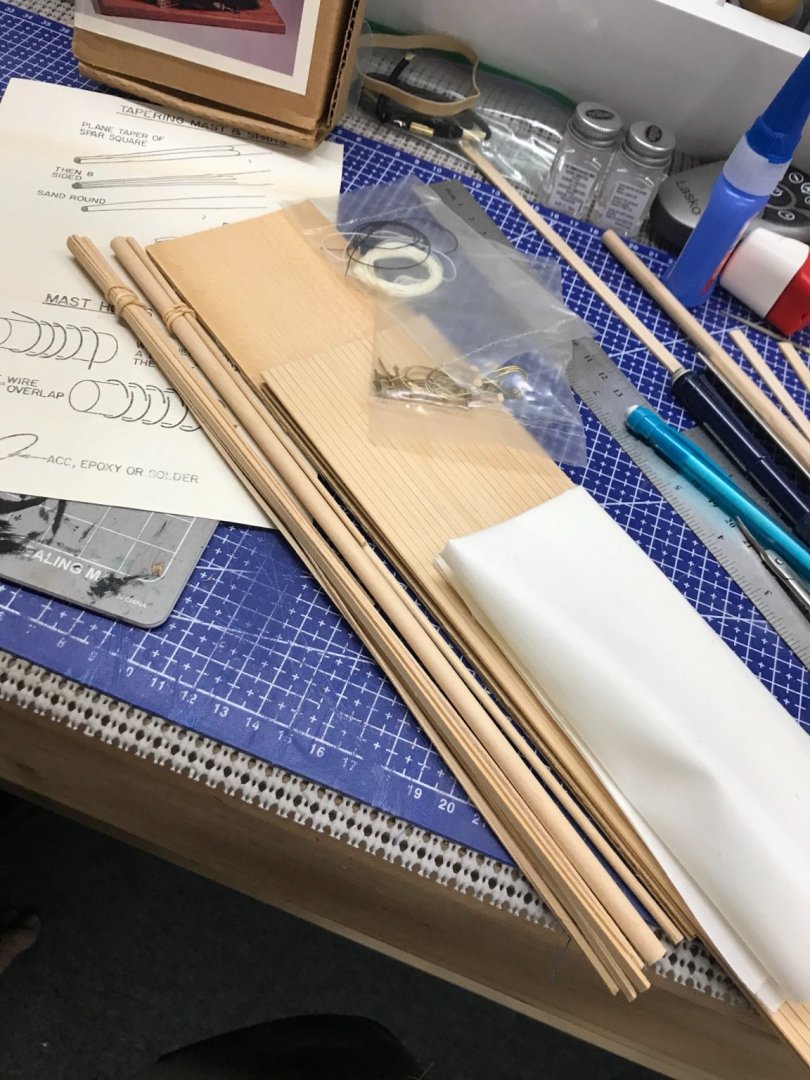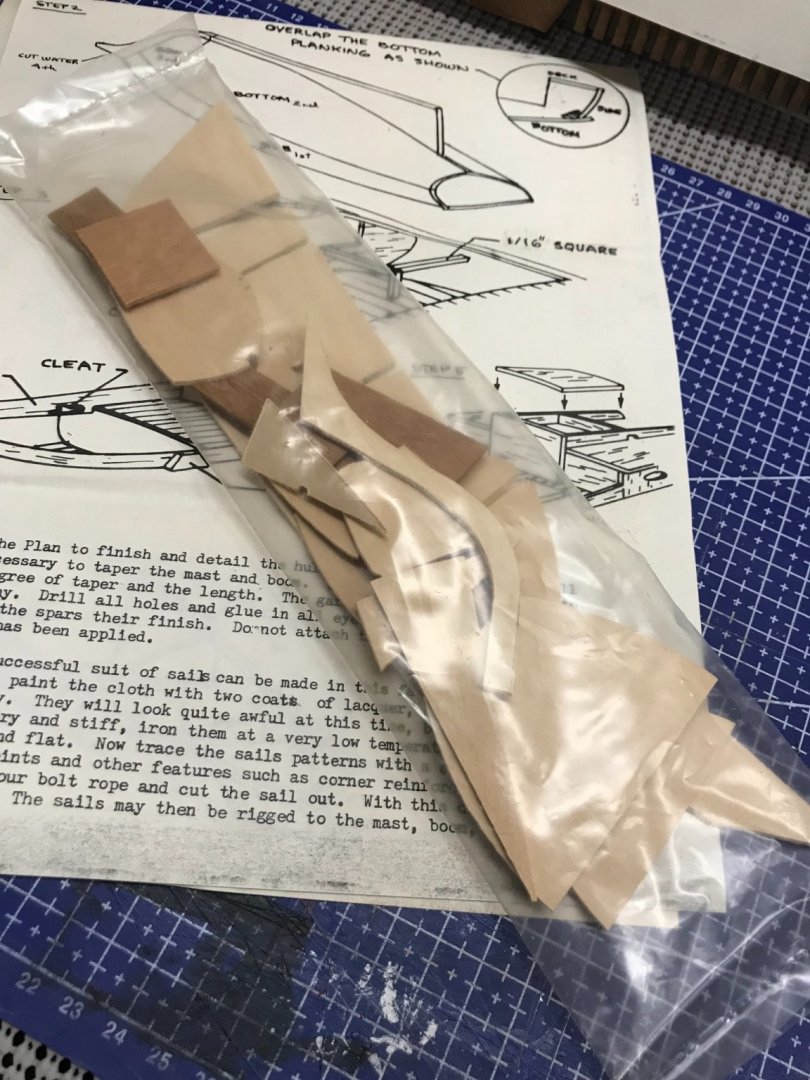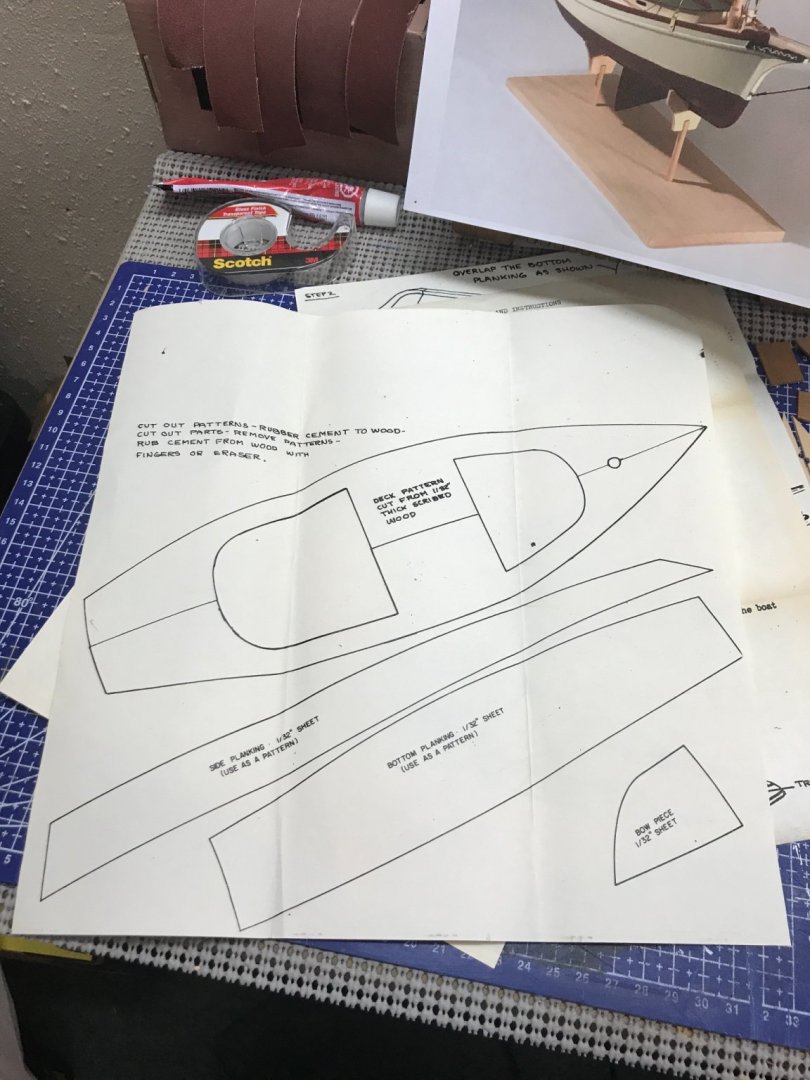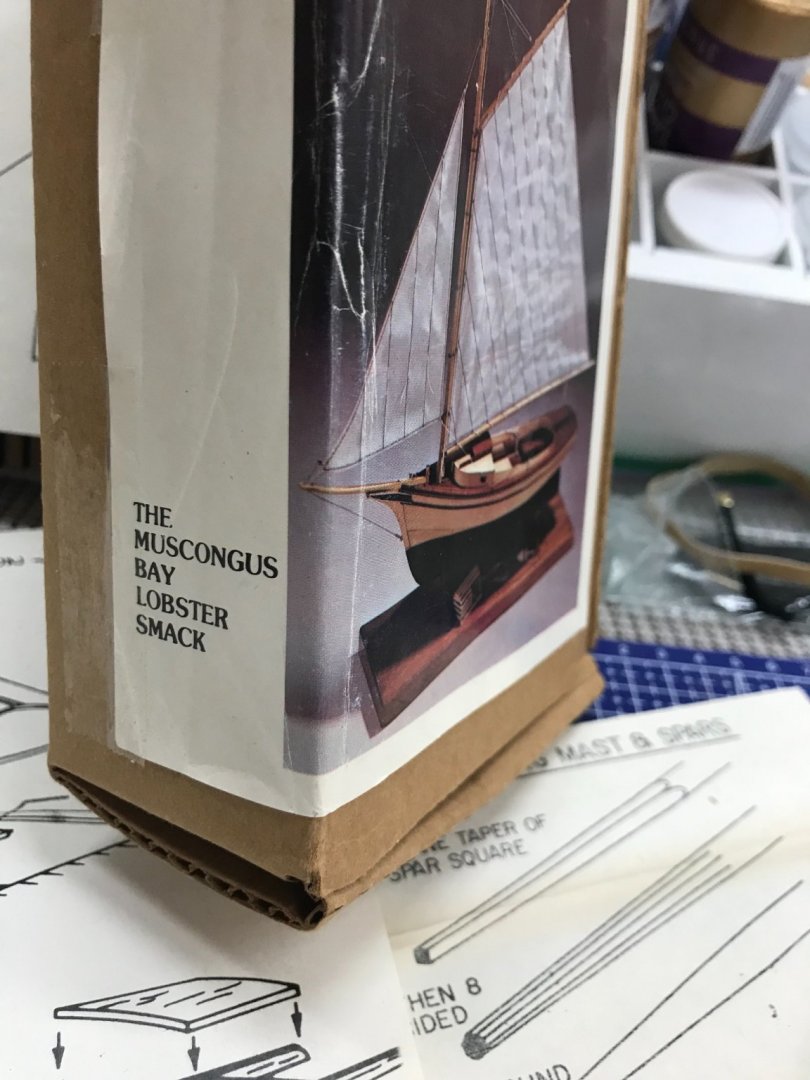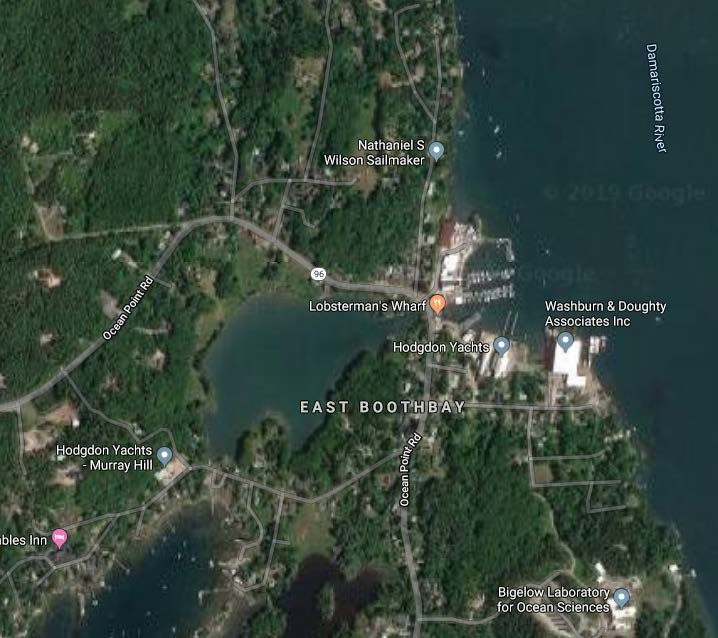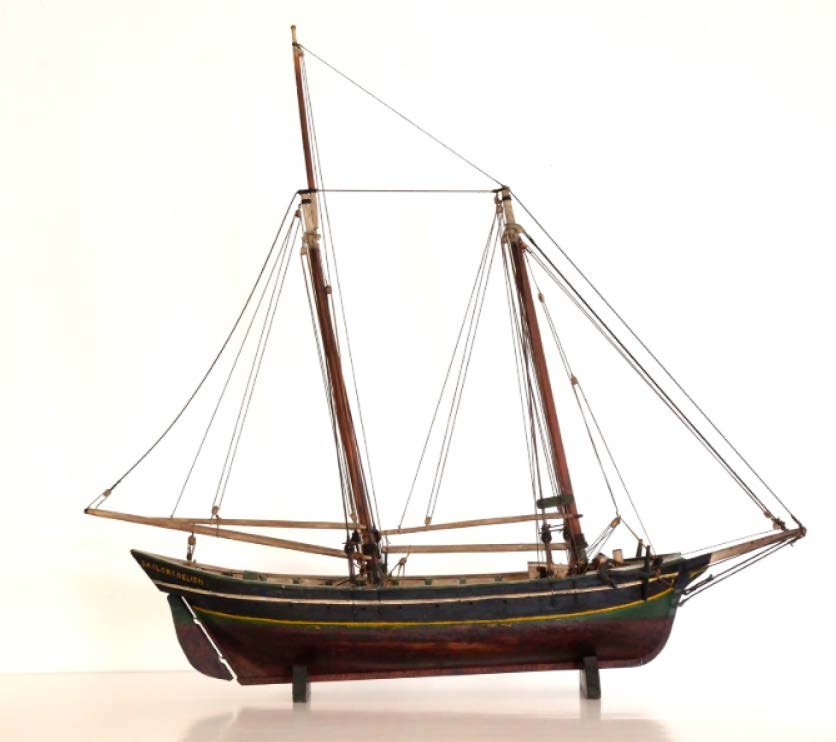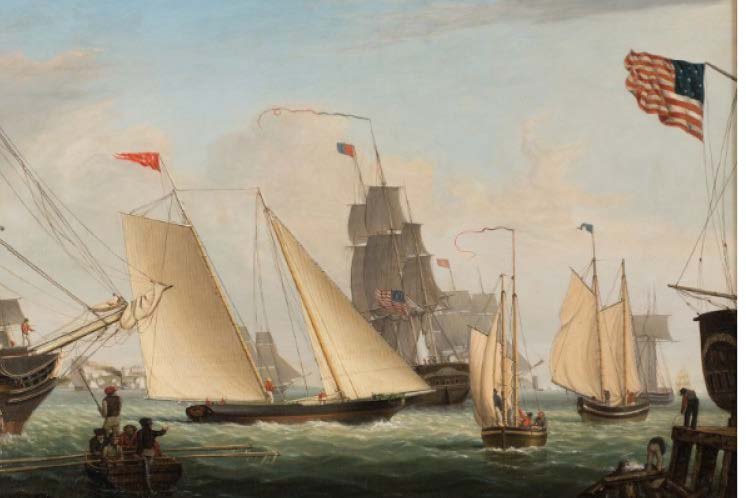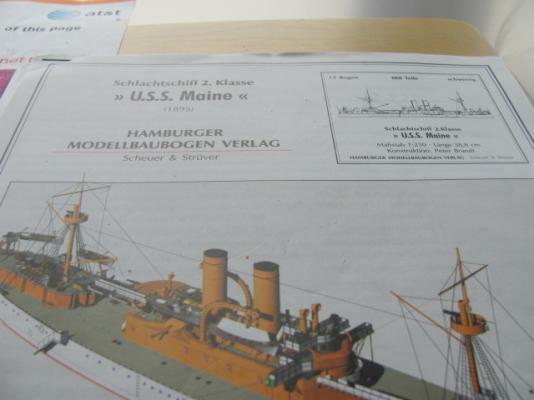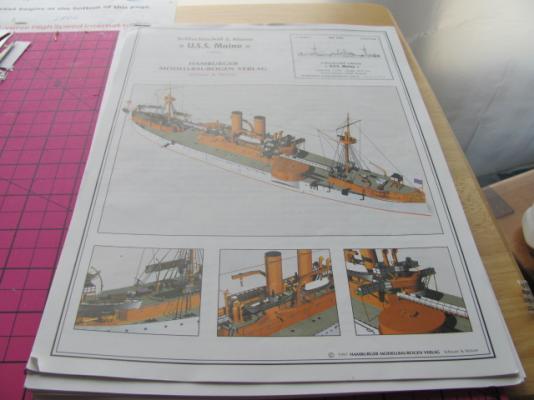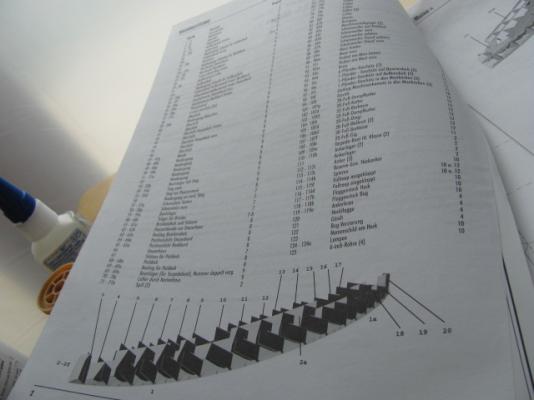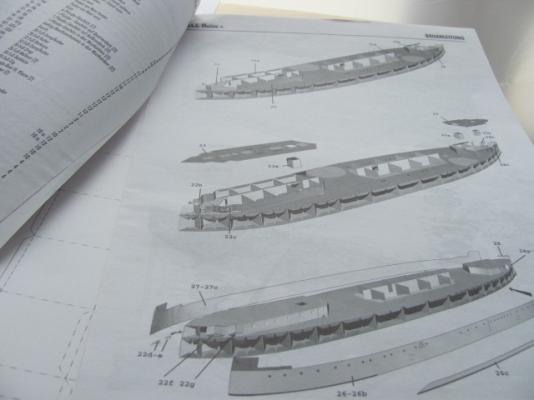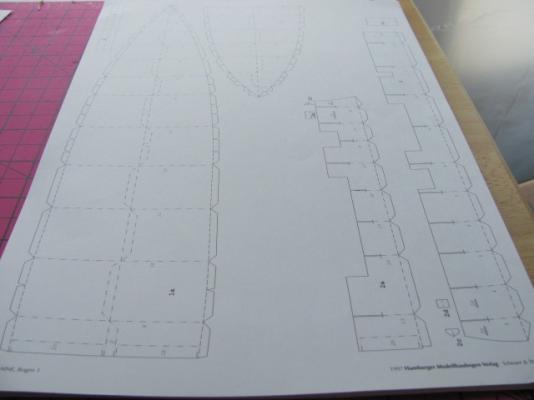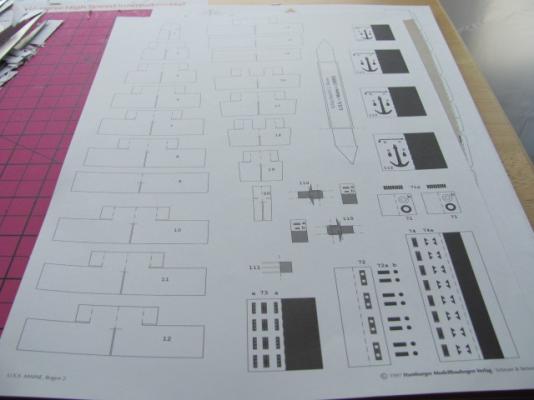Search the Community
Showing results for tags 'Maine'.
-
Hello all, I’d like to share a project I’ve been working on for the past month. I chose to start with the USS Maine in 1/72 scale but in truth I’m captivated by just about any pre-dreadnaught design especially some of the tumblehome hulls like the USS Brooklyn and the French Massena, Carnot, etc. Most of the work accomplished thus far has been in the cad program (fusion 360) but I’m just about to start printing parts as I move through and complete the design. I am including the torpedo boats that were meant for the Maine, and hope to eventually figure out a way to launch them while underway.
-
Building log for beam trawler Harvard 01 The beginning I am in the middle of a deep dive into the study of one our Boothbay Region shipyards, most often known as Rice Brothers. As part of that study, I will likely include three builds and this one is the second. The Rice brothers’ father started building smaller boats about 1892. As the three sons came of age, they dove into ship building and took over from Dad. They formed the firm of Rice Brothers by 1903 and with three brothers expanded quickly. One Brother Frank split away in 1906 and continued on the property with a lumber yard, small boats service, cars and several other ventures. By 1910 the main firm was making their own small motors. They also set up a production capability making multiple class boats, both sail and motor. The traditional Maine built schooner based workflow continued as well, and in 1912 they launched the B B Crowninshield designed aux schooner Adventuress that sails today out of Port Townsend, Washington. Let’s see what’s up. 01 here we see a 1903 panorama of East Boothbay, Me. On the left we start with Race point with a pier for the steamship Enterprise, next we have the properties that were changing hands from Murray to the Rice family starting in 1892. The small yard was on the far side but quickly took over the whole pier where the steamship landed. Next on the right is a mixed area of sail loft, mast/spar maker, another yard that had been active since 1840. Next is the framing of the 4 masted schooner, Eleanor F Bertram being built by W I Adams. In the foreground we have the Hodgdon yard where many schooners were being built at that time. 02 here we are looking south from the water to the large addition to the Rice brothers shop [light colored siding] built in 1910. This expansion allowed class boat and production line style of work. 03 here inside we see a whole fleet of 30-foot racing schooners being built. There are similar photos showing runs of their motor launches and other yacht club one designs being built as a fleet as well. 04 here is an opportunity right now on Marketplace to buy a 1901 Rice brothers engine made into a table. 05a &b here is a photo of Adventuress as she was launched in 1912 and a recent internet photo of her as a featured schooner in Washington state. In 1916 they got their first order to build in steel. The Lightship Poe. She was well along, and orders came in for Steel draggers too. There were ultimately 6 large steel hulls to build. 6 Here we see further expansion in 1916 and preparation as they won their first contracts to build in steel. Oh no a huge fire in the summer of 1917. The losses were terrible. More than 40 completed boats ready to deliver went up as they were stored inside. Outside the lightship Poe was totally ruined. 7. here looking across the smoldering hull we see the empty building frame. 8 look at the deformation cause by the intense heat. 9 from the shore it is clear a new start is needed. 10 we end this chapter on a good note as we see the following year the shop was rebuilt and work continues. All for now
-
Introduction This is the USS Maine kit by Bluejacket. This beautiful multimedia kit features: an enormous solid hull, resin turrets and sponsons, metal gun barrels, and many sheets of photo etch. After planking many hulls, decided to build this solid hull kit; less time on hull building, means more time spent on topside buildout. And, hopefully, quicker results. Can I knock this out in 6 months? This log may be less detailed than my USS Constitution log, and will show how I do the major tasks. My building philosophy, at this point is to keep working, don’t sweat the small stuff - analysis/paralysis, and trust my ability to overcome the inevitable problems. Please feel free to send a message with any questions you may have.
- 166 replies
-
- Maine
- BlueJacket Shipcrafters
-
(and 1 more)
Tagged with:
-
Building log for the Lightship Overfalls at 1:96 by Jond. LSO 01. the beginning This new project has taken some time to figure out. Last year I completed an overview of the history of Boothbay shipyards 1800 up through 1920. I built a three masted schooner to be a center piece of that presentation. I then built two brigs to fill in more of the past. This year I have begun to dig into the next era of Boothbay shipbuilding beginning roughly 1920. I also want to move into the world of steel ship building. Wow there is so much to learn and each week I find even more avenues to follow. To reel in the expanding study and to focus on what will be part 1 of what now will be at least three builds, I chose a fun topic. Lightships of Boothbay. There were four of them. First up I would like to list the 4 Lightships built here in East Boothbay at the Rice Brother’s yard. Parallel to this log is my research of the evolution from wood schooners into steel ship fabrication that started here about 1915. I chose a lightship as a model because I just learned that three Lightships of the 4 built right here are now in prominent US Museums. One is in Delaware, so a fall road trip is already planned. The four lightships built here include: 1. LV 99. Poe, a reef off Sheboygan, Wisconsin, the work was started in 1916, but alas, the hull was burned in a yard fire 1917. The Lightship was rebuilt and launched in 1921. She was sold out of service in 1955. 2. LV 118 Cornfield, a reef in Conn, was built in 1938. She served 20 years there and then as LV Cross Rip near Martha’s Vineyard then LV Boston through 1972. Since then, she has been docked in a museum in Lewes, Delaware. 3. WAL 604 Columbia, Mouth of the river in Oregon, was built in 1950. Now she is docked in the museum at Astoria, Oregon 4. WAL 605 Overfalls, the entrance of Delaware River built 1950.After decommissioning, she was sent to Blunt Reef in California and then became the west Coast Relief. She is now at the museum in Oakland, California Secondly, let’s start at the beginning of Rice brothers and their Lightships. Rice Brothers started in East Boothbay in the 1892. Their growth was substantial and lasting. After they finished in 1955 several owners worked in the yard and then since 1985, it has become the major establishment named Washburn and Doughty. For my immediate study, the steel hull 98-foot Lightship built in 1916 has few documents on its detail. I will continue to research to see if I can create better images of it, but not a built. Several steel draggers were built then and steel aluminum work as well as an impressive wooden fleet emerged. I have just digitized over 400 images of their history. I love the stories and history of the second lightship, built in 1938 at 114 feet. Its history led through Connecticut then Martha's Vineyard and Boston eventually to its home starting in 1973 at Lewes, Delaware. To confuse some of us, she was renamed Overfalls by the park in memory of the light ship near there. Rice Brothers also built the real Overfalls in 1950, but she went to the west coast after closing the Delaware station. I really wanted to build smaller 1938 one but again lacking in drawings I hesitated. Number 3 and 4: we have the best possibility to reasonably create a model based on documents. Two vessels-built weeks apart and launched in 1950, were the lightships Columbia and Overfalls. They were virtually identical at launch. The Columbia naturally went to Oregon, and she rests today in Astoria. Finally, we have my target. Wal 605 was launched as the Overfalls. After decommissioning in Delaware, she went to be Blunt Reef in California. She then became the west coast Relief vessel. She now rests in Oakland California with the name Relief painted on her sides, however I will name her Overfalls as that is how she left the East Boothbay yard. Sorry for confusion, but I didn’t do it. I believe for me it is a good transition vessel. I know so little about modeling anything like this. That means more books and more fun. As to the modeling it takes me into work where I also have little experience. The on deck fitting out of a vessel of this era makes tying knots and silk span sails a useless skill set. The build: what to do and how. This build is based on taking the Bluejacket Kit for the lightship Nantucket and changing it to another Lightship 20 feet shorter with a different on deck configuration that was built 14 years later. Unfortunately, as I have already progressed a little, I have found much of the kit material will simply go unused. Never mind there is so much new stuff and am grateful for what is included or available, and I will make up a list of what more I need due to the different configuration. Example I need another exterior doors, a different motorboat, and a navy anchor. My first need is plans. The lightship kit Nantucket comes with great plans. Unfortunately, it was 148 feet and over 1000 tons. I have read that by 1950 the service had settled on a standard design of 128 feet and somewhere around 600 tons. The lightship Nantucket was apparently a beast due to its location. I found a small pdf set of plans online of Relief and now thanks to Don at Taubman plans I have a complete set even with lines for the LV612 San Francisco. That was another 128 ft standard coast guard design lightship that was built in Maryland in 1950. Both sets are the same, so they should be a match for here the same year. Starting out the hull using the Kit After a very brief consideration of scratch building a hull with at that time no proper line drawings, I called Nic at Bluejacket. They have a solid hull kit for the Nantucket lightship. That vessel is bigger but was built in the same era with many of the same things. We talked briefly about options in cutting down the hull to fit a smaller build, 1938 Cornfield. I had been trying to get back to this ship at only 114 feet and the kit would not work. I decided then the 1950 hulls at 128 feet is the way to go. I have a normal cut off saw and can take 20 feet [ 2.25 inch in scale] out of the middle of the hull and then make it work…..we’ll see! Nic said after listening to my plan that if I screwed up he could sell me a new hull.....😄 I think this kit will also help me get into more modern ships much more easily too. Many of those little pieces will be new to me and I surely need more experience at the 1:98 scale as well. My fingers don’t like it small but that is the way it goes. Hull early Progress: First up I have the outline and template plan from the kit. It is right on …18.5 inches = 148 feet. There are two stations, 5-6 that are the same, so I need to find the middle of them and cut back 10 feet in scale each way. 01 here we have the kit template plan. I have identified where to remove the 20 feet of hull amidship. I will do the lines separately before making the templates. 02 here I have cut out profile section of the 128-foot standard design I found on the internet. The highlight confirms that the draft difference is about a foot and the bow is not quite so high. It is not perfect but a way to get there. 03 I glued to hull to a plywood strip and made the deck level. This will sit in the cut off saw. 04 Here we are back from the garage shop with the center cut. 05 the center is now apart. 06. the hull is dry fit. 07. I chose to go get the Wes Systems epoxy to make this joint. I will need to sand 1/8 inch off the sides, so it needs to be a strong joint. next up fix the hull profile.....all for now
-
The Schooner Blue Dolphin BD 01. The Beginning I start this new log with a little nervous excitement. Fortunately, it is only 'father time' making it scary. The story of the Blue Dolphin I am finding is quite interesting, but my knowing a principal character in this play and having the possibility of meeting more of them is really exciting. The big fear for me is the short deadline to prepare for a conference next June to celebrate the three schooners that combine both Boothbay Harbor, Maine, and Arctic Explorations in their history. First at the highest level let me offer the plan for the panel discussion next summer. There were three schooners that fit the bill. The first was Bowdoin. She was built here in 1921 and returned many times while leaving for or returning from the far north. She was recently replanked here in 2018-19. While here I got to climb all over her with Will McLean her captain and I built a diorama depicting her in Greenland in the spring of 1924. In more recent times, she sails here most every year, normally for the same Windjammer week that would include our panel discussion. The second was Ernestina Morrissey. There are many connections of people that will come out as we tell this story. In short, her long history included many seasons sailing in Greenland especially 1935- 1940 when a local summer resident / college student was on her every summer. She came to Boothbay again in 2015 to be completely rebuilt. I had the fortune to climb through her many times and meet the crew that did the work. I built another diorama depicting her in her 2021 rebuild. The third will be Blue Dolphin. The connecting history is the owner who bought her in 1949 and led scientific expeditions from Boothbay to the arctic from 1949 to about 1954. The owner and captain David C Nutt Sr had sailed on Effie Morrissey, was the executive officer on Bowdoin in her early WWII days, and then captained the Blue Dolphin. His son still lives here and has many memories to share. I will be building a model of her in the same 1:48 scale of the other two, to present as part of the panel event next June. Ah then JUNE!!!! … the downside of this venture … That means I need to get to work right away. I need to put down or at least drastically slow down the build I am doing now and jump into this build with only 5 months to do the work. Blue Dolphin brief History So first let’s look a little more at Blue Dolphin and see what we must do. What do we know, and where are plans and photos? She was designed by William Roue and built in Shelbourne, Nova Scotia in 1926. Mr. Stephen H Velie Jr of Kansas City retained William Roue, the architect of the well-known 1921 schooner Bluenose. The charge was to design a 100-foot version of Bluenose to be fit out as a yacht for ocean cruising. The vessel was built in Shelbourne, Nova Scotia in 1926. The owner kept her there until 1933 and reportedly took long trips north. In 1933 Blue Dolphin was sold to Amory Coolidge of Boston. In the first year she was chartered by the Ralph Chandler family, who sailed on a five-month cruise to the Galapagos islands and back. Nina Chandler Murray was a 13-year-old part of that family and in recent years has published a book, The Cruise of the Blue Dolphin detailing their family adventure. ( a fun read) In 1942 the vessel was sold to the navy for $1 and she was assigned to be on station in Casco Bay off Portland Maine. One might recall Bowdoin was similarly taken over by the navy. 1. in this photo we see her with a cabin built around the helm [ Maine winter duty is cold!!!]. The Navy painted her white. She was repainted black when she came to Boothbay after the war. In 1949 Blue Dolphin had been decommissioned and was sold to David C Nutt Sr. , a summer resident of Boothbay Me. David was an active participant in the arctic exploring world and for roughly 5 summers led scientific cruises to the arctic. Records of these cruises are part of Woods Hole Institute archive, Dartmouth College, and other groups. As mentioned above, Captain Nutt had a history that ties together our three schooners who frequented Boothbay Harbor and the arctic. Who was David C Nutt Sr. David C. Nutt Sr. as a student at Dartmouth College sailed every summer on Effie Morrissey, now Ernestina Morrisey, with Captain Bob Bartlett from 1935 to 1940. David is mentioned several times in the history of the Effie Morrisey and fondly remembered by Bob Bartlett the well know skipper. Bowdoin. David Nutt Sr became the U S Navy exec. officer on board Bowdoin during her early WWII days. They were surveying to find the best airbase locations in Greenland. David left after completing that mission and went to the pacific to continue ocean surveying as part of the Pacific campaign. When he returned, he found Bowdoin committed to return to Capt. Donald MacMillan and Blue Dolphin available. After buying her, Blue Dolphin came to sail out of Boothbay in 1949. After 5 years of northern cruises, she stayed in the harbor until the early 1970’s. She was then sold and moved to the great lakes. More on that story later. Where to get drawings???? David Nutt Jr. is a neighbor and friend of several years. David was a professional boat builder. One of his joys after selling his business, and by the way sailing for four years around the world with his whole family, was restoration of classic racing sailboats. David restored my Boothbay Harbor One design, a 1941 classic 21-foot beauty. More on the story in my BHOD log for the two 42-inch RC models I built a few years ago. There were many views of his work included in that log. I contacted David a few months ago when the possibility if this schooner project came up. David owns, and kindly shared with me last week, an old print of the lines of Blue Dolphin. He also built a Half model years ago. The black paint on the hull is the same as on the real schooner. 2. David Nutt sharing his old print of Blue Dolphin 3 David Nutt’s Half model of Blue Dolphin he built many years ago. So, with about 25 photos so far from the internet and the local Boothbay Region Historical Society along with these plans, we are ready to begin. First up I embedded the squared-up photograph in my 2D cad. David said he has many more on deck photos and we hope to get to see them this winter. My intent would be to try to depict the 1950 sailing version as it applies to our town. Much to do to get ready
- 28 replies
-
Post 1 The Beginning I start this log before starting the actual build as I am completing to gather the research involved after having selected a subject. This build will include more Boothbay Built vessels, and I chose to study our brigs. I began some time ago with the following image from our local Boothbay Region Historical Society of the Torrent. She was one of the last brigs built in 1855 and will surely be part of the story. 1. This painting was made in Genoa, Italy I believe in 1856. Apparently, a result of a practice of the time, where an aspiring artist would sketch, then quickly paint and sell an image to the visiting captain. I am naming the project Brigs of Boothbay. The first recorded Brig in 1825, was Albert and the last recorded in 1855 was the HG Berry. I will represent both within this log, but the real build will be the newer and large vessel of 1855. I will build that vessel. H G Berry as a POF build partially completed on the ways. But first to explain the plan: I turned to the wonderful book, the Shipping Days of old Boothbay by George W. Rice. There and within a few other sources, we have found recordings for 32 brigs built here between 1825 and 1855. I will include that list in a table later. I characterize the list as follows. The early brigs included at least one full rigged version, but soon most became half rigged. The hermaphrodite brig [ I am told here in Maine is a half brig] was apparently preferred on the coast associated with Maine sailing. It seems that much of service was to and from the West Indies, however the practical need to sail up wind remained the deciding factor. To sail from New England to New York and beyond means up wind all the way! They often took lumber, dried, or salted fish south and brought molasses and trade goods back. Reading further though the book, Mr. Rice tells of many worldly voyages to the Caribbean, the Mediterranean and further in these sturdy vessels. The earliest Boothbay brigs were roughly 75 feet and just over 120 tons. After 1850 they passed 200 tons and by the end of their run in 1855, they, including Torrent and H G Berry, were 110+ feet and roughly 320 tons. There are five of each large and small, and that is what I plan to show……bookends one might say. Large Boothbay brig; Plank on Frame. H G Berry 112 ft 320 tons. .....I believe after taking time to make frames they are a feature of the build. The easy way to make that part of the show is to have the vessel partially planked and decked, so one can see inside. Then I also like to show a vessel sailing. My solution this time will be to have two vessels. Small Boothbay brig; POB partially completed kit hull. Albert 75 ft 120 tons......Retasking of an old build. I started the kit for Kate Cory years back. I had two hulls and at the time thought to build two whalers. I will continue the log of that build using one of the partially built hulls completed as a period schooner after this build. The second hull was to be an 1829 Massachusetts brig Pavilion. I will use it for the small brig I reference here. The completion of that model will represent all the rigging and sails that obviously cannot be shown with a vessel under construction on the ways. She will be called Albert, the first brig built in 1825 but will represent all the 5 smaller versions. They were built 1825 to 55. She was 120-ton version brig and will be shown under light sails [ most furled]. Thus, I can complete a full build [ sort of]. And I can at least practice all the tasks. Furling silkspan will be a new one to me. My last two builds, if combined, were like this one. One was plank on frame on the ways and the most recent POB sailing. They were done at a comfortable 1:48 scale. As I look around at my partially completed projects and consider the practicality of sharing displays, I have decided to try this build a bit smaller at 1:64. The brig H G Berry I plan to build as the feature of this project is one of the last four Brigs locally built. For the image I will use Torrent shown above. As partially built, that will be limited to the hull. Four of the five large Brigs were built in East Boothbay, so I will select East Boothbay as the site. Torrent and H G Berry were built less than 150 feet from each other less than a year apart. I must assume with so many people working amongst the yards in this small village, that very few variations existed. I will explain that more in an update about the local shipyards. There was an interesting twist to the original design of Torrent to record but not build, and that was altered some 15 years after. The captain’s cabin like a few other brigs of the time, crossed the entire deck. Most would have maintained deck level passage outside the cabin. This cross-deck configuration forced the crew to climb on the roof deck to tend sails and to gain access the wheel, located aft of the cabin. To avoid all this interruption, the original build moved the wheel forward of the cabin and used chains from the wheel art to the rudder post. The full after deck area, normally for the wheel ,was incorporated into the captain’s cabin. The noise of the chains was apparently unpleasant to the captain’s companion. The owner cut off the aft section of the huge cabin and replaced a normal wheel and exposed deck aft of the cabin. That revision was a more normal configuration that I have read was shared on H G Berry. next up getting plans all for now .
-
June 2022 edit Well it is time to sort this build out and make progress not noise. The ultimate plan has shifted further into the Boothbay, Maine vessel category. A few things to consider as I rationalize this change. I will do all that in the 18th posting below where I pick up the story. The short version is this build started as two sister whalers based on the kit Kate Cory. It will now be two Schooners bridging 1829 to 1902, both built in East Boothbay. please jump to post 18 below. if there is importance to the location of this log it might be moved based on the now 1829 selected date for the schooner version to best match the hull design. I will remove one of the hulls [ pavillion] from this log and add a second old schooner model in need of repair and retasking. This will make one old style schooner of 1830 February 2022. edit This edit including the change in name and update is to celebrate a final decision on what to do with this started project. Since working on general maritime history where whaling is clearly a big part, I have refocused my limited ability to the shipbuilding in our own Boothbay region of Maine. It is true that many Maine built vessels and seamen went to the whaling industry. In fairness I leave that to all the folks in that region. In my ongoing studies that will be parallel to the restart of this build will be study of the 32 brigs in Boothbay. This build will be planned to make the two brigs representative to two built here. I will identify the two later and plan to have them in a sailing pose. Parallel to that completion next winter, I will be planning a version of a brig on a scratch build. We shall either expand this log to cover all three or start another.....thoughts for another day. started project through 16 posts was to be . the new work will begin on planning over the summer as I complete another project, Dancing Feather. original log Two Whaling Brigs, Kate Cory and Pavilion KC Built: 1856 in Westport Point, MA Pav built in Ct and converted to a whaler in 1841 Length on Deck: KC 75 feet and Pav79 feet [ close enough at this scale] Models are model Shipway kits at 1:64 It has taken me a while to figure out what to do with two, yes, I have two, Kate Cory kits. During the last several years before I retired I would play each Christmas season on eBay and bid on Kits. Two times I won two bids for different versions of the same boat….oops I’ll share the other one in a few years when I move in that direction. What I got with those bids was one old 1994 version and one newer version with the 2007 instructions of Kate Cory. They have different parts provided and so far, and I found some missing wood. No big deal to me, as I have a good supply. The old paint kit came in one box. It was kind of sad, I’ll show it one day. One reason I got these kits is I have always had a plan to take a tangent into the world of whaling. That means considerable reading, some travel and yes building a few models. I am fascinated with the arctic and whaling is a big part of our New England experience up there. I plan to ultimately build a large cross section of one focusing on the process of rendering the oil. We’ll see where it goes. Now what to do with boat number two. I thought about rigging one as a schooner and the second as a brig, but the story seems to be that the schooner was not a successful rig for ocean whaling. In my early research I have found a book that tells the complete history of a 79-foot brig that first built as a merchant and then refit as a whaler. I bought the book and for now plan to see if yes that is hull two. I will start off as much of what is to build is affectively identical. Then other than the white strip and fake cannon ports see what could be different. I also have my other builds that all need work before next summer, so this is truly a squeezed in adventure. So let’s start out. I shall add in some of my research results as we carry on. This also my first down scale to 1:64 so I have some new skills to learn here too. · Here we see two books. As stated one was written in 1993 by Erik A R Ronnberg and the second 2007 by model shipways. The plans are the same. They seem fine for modeling at this stage though lack many details. I have read in other blogs that until recently the New Bedford Whaling Museum would sell the Erik Ronnberg multi sheet detailed plans and booklet that would be needed for anything larger or more detailed. I want to pursue them but so far, no success. I hope to visit the museum over the next few months. · Here is the book I bought giving a full life study into the 79-foot brig Pavilion. For now, I shall plan to try match up some colors from other brigs of the time [ though guessing at this point]. The picture on the cover shows the fake cannon deck and that is easy to include. This model is the first solid hull kit that I have built. For these early whaling kits I am focused more on what makes them whalers and how to work at smaller scale. I have so much to learn and it would take so long to build two hulls, that is why at this point I am happy to try it out. I was very impressed that after cutting out the patterns [ only available in one of the kits] I was to find that both hulls were pretty good. They advertise correctly that the bow and stern need work and that is true. They also advertise that cutting the bulkhead was to be the most difficult work. To be honest, now that I have done it [sort of], and now I see we are planking both plank shear and whales on the upper topsides, I would recommend cutting off the bulkheads and building them up in proper thickness. I will show you my compromise for this build in a bit. · Here the aft end is shaped up and one of the stern posts is set. I also drilled the hole through for the rudder post. · Here I completed one of the fit ups and added the rough masts and rudders to take a look see. Now to get going on those little whale boats. My Bluenose dories did not come out well and someday I need to rebuild them. First, I plan to go through whaling boats. With two KC’s and Charles Morgan followed by the big ¾ whale boat I should get there. As in previous builds, making one hundred turnbuckles, multiple spars etc I try to set up some form of production line. I do it not just to get through, but I assume by the last part I get the hang of the task. Here I have eight boats to make. I would think the 8th boat to be easier than the 1st. let’s see · Starting off both kits use the buildup lift method. My plan is to move through four boats one step at a time. Then as I get it figured out expand to all eight before I forget it. · Here we are making progress getting them set up; the insides are shaped using a wireless Dremel, file and sandpaper. I added some glazing putty as the fit up of the lifts inside was not great. I sanded again and put the bottoms on. I just started to rough sand the outside on the first boat. More on that process next time Cheers
-
I always thought of the USS MAINE. The unique gun arrangement and hull designs of that period are fascinating in looks. I decided to play around with the scrap sheet metal I could find and began hammering and bending plates tig welding them together. After many months of sporadic work time I finished the hull. I made no drawings and it is very scratch built. Just using pictures I decided to make the MAINE and please don't look at this as absolute accurate. It's just a love for maritime history and ships and testing out this idea. I am working much more now as I want to see a finished product. Stay tuned as I get more done!
-
Revision to the beginning and name of build I need to change the direction of the hull started in the first post and alter it to make the schooner the Ada Cliff. There were two similar schooners built in Boothbay in 1917. One in Boothbay Harbor and one in East Boothbay. Ada Cliff has been recorded to be 149 feet and the Priscilla Alden is apparently recorded at two different lengths. The local records all show 142, but a Boston based reference suggests 154. The Ada Cliff was a more standard schooner as per her pictures, built to spec for coal. She became the design basis of several four masted schooners built in the boom years that followed. There is no remaining half model or drawings for Ada Cliff that the late Jim Hunt was able to find in his research, but several photos for reference. More on that later I started off using a generic hull form described in the first post below. I then was able to find more references to the Priscilla Alden. Those references including surviving drawings showed a much sleeker hull. I have decided to use the framing I made in the first post to build the Ada Cliff and will hold back and start a total new hull later on for Priscilla. That will also give me the opportunity to study more about the disparity in the length. The following first post will lead into Priscilla and the next post will bring us back to Ada cheers Post 1 The beginning The beginning to a new project can often be a bit risky. For me at least I am typically a little tentative. Will this be small or large scale, plank on frames or bulkhead model or a diorama? In this case, I want to build a three masted Boothbay built coasting Schooner. What is interesting is that I rushed into it and started making sawdust before fully sorting out my research. First of all, I wanted to explore this design because after studying the bigger schooners, and learning firsthand the poor sailing aspects of the “too long” form, I wanted to get to what seems to have been the most reasonable solution. That is 3 may have been better than 4. Three masted Schooners a quick summary • The first 3-masted schooners evolved in the Chesapeake region around 1790 • The three masts were adjusted to be the same height around 1850 • 1840-1865 full rigged ships looking for speed evolved into clipperships • As steamships took over for long hauls, coasting schooners, with less labor costs, took on coastal routes • 1865-1880 coastal trade blossomed as the US government required US flag vessels for inter-city trade • The coastline favored long narrow fore and aft rigs (like clipper) with small crews • Coastal schooner construction grew quickly, and the 3-masted fleet competed with steam ships along the coast These beauties became prolific in the decades after the civil War. Then, as human nature and business models dictated, they grew until the sails became too big. Then the plans changed, and a fourth mast was added to improve the sail handling and keep the sizes growing. As we know that cycle repeated itself across Maine until we ended up with nearly ten 6-masted schooners and one steel hulled 7-masted schooner by around 1910. Then, except for the World War I short termed boom, steam took over . 01a Looking at the local Boothbay market, we learned that through this period schooners built here were prolific in the two masted fishing arenas. From 1873 to 1903, nine bigger schooners built. In East Boothbay, four masted Schooners were launched from the Adam’s yard in 1890 and 1903. Jim Stevens, one of the area gurus, put together a story listing 21 3 and 4 masted schooners built on the peninsula. There was a complete void until in 1917, when it all came back in a roar. ' 01b In the main harbor in the year 1917 the Ada Cliff was being built at the I R Reed yard. That year the Mayor of Sommerville, Mr Cliff himself, and lots of investors came, bought that yard, and built four 4-masted schooners over the next few years. They took the partially built Schooner Ida Cliff lines and simply stretched them 40 feet in the middle and then added a fourth mast. Anyway, someday I hope to build a diorama of all that stuff. It is not for this build. What is of interest is that in 1917 the IDA Cliff was a 149 foot long three masted schooner and that was pretty much as big as they got. Just beyond the big roof in the phot, on the other side of the harbor, the Atlantic Company was set up and they built 6 more 4-masted schooners before then end of the era in about 1921. More on that when I get back my next 4-masted build. I am now focused on East Boothbay. I have selected a 1918 Schooner, the Priscilla Alden. I chose after searching all the names on the list I had and found at Maine Maritime Museum an authentic copy of her sail plan to use as a basis. Their list advised the schooner to be.... Length 142.8’. Traced from Charles Sayle original by George S. Parker, 1982. In that late year she was built at the end of the era of three masted schooners. Those built later would have been an exception. Fishing schooners continued to be launched into the 1930’s but three and four masted pretty much stopped in the early 1920’s in the post war era of steam. The Priscilla Alden comes up in a few publications. The late Jim Stevens of Boothbay wrote an informative article, Boothbay Schooners in Downeast Magazine published in Sept 1968. At the end he listed Priscilla to be 142 feet. I suspect with his working often with the Maine Maritime Museum that they shared sources and that is why they agreed. It is the length I plan to build. A challenge was to find a hull plan big enough to use in cad to match up with the sail plan. Here some artistic license in needed. I found in the Maine Maritime Archive the hull lines for several three masted schooners. One, the Kate Hilton was built in Bath and had remarkably similar characteristics. She was 140 feet, so I chose her and down loaded the drawing. Maybe a False Start I thought that this data was enough information to go go go A month in and the local Historical Society has reopened for us hobbyist to come in and do research. I signed up right away and this week went down to spend time going through several files. Most important however was photocopied pages out of a book. The book John Alden and His Yacht Designs written by Robert Carrick and Richard Henderson. On pages 86-88 there is a set of plans that include, sail plan, lines, deck arrangement, cross section bow to stern as well as an amid ship cross section. There is enough information here to build anything. Unfortunately to scan the line drawings, approximately one inch square, and to blow them up in cad got a bit fuzzy mess. I found the book on Amazon and await a better original for scanning. The problem I discovered however is they declare the schooner to have been much bigger. WHAT??? We’ll see So let’s start off with the steps I took to rough out and make bulkheads for a good start. Design 02a here is the sail plan published by the Maine Maritime Museum. There are dimensions on all the sails. There is a little variance[ between 1-2%] between vertical and horizontal found while measuring the image with CAD. 02b here is the source as printed on the drawing. Key word for me is blueprint. 03 here is the selected hull plan for Maine built schooner in the same size. I made offsets from both the sail plan and the bull plan and in scale the difference was the sail plan forward shear line rises about 1/8th inch higher than the hull plan. That is close enough for me. Maybe when I get there, I add that 1/8 inch in…we’ll see 04 here is the source of the kate hilton hull lines 05 here is the Jim Stevens chart from the 1968 article in Down East magazine. It clearly shows Priscilla to be 142 feet. Of more interest is the low tonnage. IDA Cliff at 149 feet built the same year in the main Harbor was 25% heavier [ volume that is] as she was made for maximum coal transport. Priscilla was lighter and most likely a faster sailor. More on this argument later 06 here I have laid out the cross sections the rectangle that will be used to support the bulkheads to the building board, making the waterline 4.4 inches above the board. That will come in handy at the time of marking the water line. 07 here all the layers are turned on for the forward sections. 08 here is what the pattern looks like for one of the bulkheads. The keel/keelson slot is important to the assembly. I did not sit for a while and add the extra cut line for the planking thickness. It takes me much longer that striking a line by eye . 09 the patterns are all glued to a simple Luan plywood from Lowe’s. They are ready for cutting out . I will adjust later for the thickness of the planks. All for now [jd1]
-
Another Laughing Whale vintage kit. Found this one, of all places, on Etsy. I seem to have become addicted to rescuing these forgotten kits. This one has found it’s way back to Maine from Florida… 😩 Sold in the 80’s it’s now going to be built. Blue prints a bit yellowed but have survived well. Two pages of typewriter written, hand drawings. These kit were produced here in Maine. Just up the road here in Wiscasset, Maine. Nice materials in the original packaging. Framing parts have been hand cut. Scribed Decking and Sail Cloth also provided. Paper templates provided for the sheet planking and deck materials. All in all a nice little package. Time to get this one started. Cheers 🍻
- 26 replies
-
- Maine
- Laughing Whale
-
(and 2 more)
Tagged with:
-
Post 1 early November, the process begins Superb log a 1:24 kit bash This project is intended to celebrate the building of the first Schooner by the Hodgdon family, now in its fifth generation of ship building on the Boothbay Peninsula. There are several firsts that could have been chosen as the builder started in 1816 and then migrated east across the peninsula and then south to the East Boothbay Mill area over these first ten years. Before we make any decisions, we must first thank and give credit to Barbara Rumsey who tirelessly researched, and fortunately for us published her work tracing this history around Boothbay. In the Book Hodgdon Shipbuilding and Mills, A documentary History of the first hundred years, 1816-1916, published in 1995, Barbara tells us the story. To help with this upcoming exhibit, my first thought is to build a diorama depicting the final stages of building this schooner in the late spring of 1816. To do this work I have expanded research into re reading sections from some favorite authors. There are no surviving half hulls and many of the Hodgdon firm’s records were burned in a fire many years ago. I felt that it would be safe to take the plans created by Howard Chapelle. Even better I found that there is a recent kit using Howard’s design for the 1939 version of the pinky that was built and he apparently sailed before WWII. As I begin this project, I am in the process of moving to a new home and needing to rebuild a shop from scratch. That means lots of good news in the opportunity to improve the working environment. but an obvious crunch in time for me to have this done by next May. I bought the Glad Tidings kit with its great set of his plans. At the 1:24 scale it represents 39 feet long deck and 40 +/- top of rails and if I go back to the peak of the stern I can get to 42ft.?. This is one of those rationalization conversations. The first decision is what convention to use for hull length. I will quickly take a leap of faith that these history books and lists use the length of deck from inside the taff rail to the forward most point of deck. That was pretty well confirmed in the schooner books I read while researching earlier builds. But what records did they keep confirming what they meant for the tax records, used in Ms. Rumsey’s research, to determine lengths of vessels. If I want 42 feet, I have some choices: Do I build it as is? If I am wrong, it is only a few percent…so it should be ok. But then a diorama with a schooner roughly 29 inches long including all rigging is tough to do. On the other hand, I do not have time to recreate too much. This is not a build to go to frames unless I want to show something under construction. Do I scan the mold plans and adjust the scale to replicate a 42-foot schooner? I could drop to 3/8 scale = 16 inches +/- on deck or even ¼ scale = 10 inches deck to roughly 15 inches +/- overall which I think in the end is easier to do in a diorama if I want to show the launch. · The second decision is …am I building the first schooner built in Boothbay or by the first builder of Boothbay. Superb was not built in Boothbay but next door by a Boothbay builder… the first schooner he built in Boothbay was Ruby in 1823 maybe or Betsy 1824 surely. Both were pinky shaped and of similar size. So, we have the boat, we just need to settle on the name and town. Diorama option 1: build at 1:24 To build the kit hull through the deck. Then to show construction activities around the schooner. Perhaps rigging a mast and or the rudder. This would use up the kit material and get to a timely delivery. The problem is with the large size there will be little room to have things around. Think of the huge figures etc. Diorama option 2: build the above in 1:48 There are other considerations. If I simply use the plans for this build, what do I do with the kit. I find that Hodgdon built a 59-footer just 13 years later after they had arrived in east Boothbay. The largest Pinkies were built around 1831 at 69 feet. I would say looking at the list however that was an odd ball and not the norm. Also one does not just up the scale, one needs to research what was stretched to add 20-25 feet to a 40 foot schooner. After that large build, the “pinky’ classification stayed around the 39-42-foot version. That all makes sense to me because Howard Chapelle was a lot smarted than me, and he chose this size for his developed plan. Even so to build bigger would extend middle sections of the hull in some way that cannot be my design, so do I use kit parts for my material inventory and trash the molds or go ahead with one at 1:24. Diorama Option 3 only use the plans and raw material. I am considering to build at 1:48 or 1:64 Superb was believed to have been built on Westport Island. That is about three miles west of us. At the time it was part of the town of Edgecomb, which is the northern third of the Boothbay peninsula. Since after the move to East Boothbay in about 1823, the Hodgdon boat works remained there until today. 01 Here we have a modern google image of the east Boothbay harbor with the active Hodgdon boat works. This property was purchased much later than the period we are discussing. It was infact sold again last year to Washburn and Doughty. In the 19th century the Hodgdon boat works included all the land where the marina is now located. That was sold in 1970. Not long after that ventrue it became ocean Point Marina. The adjacent ship builders park is the once owned by the Reeds but changed hands a few times. The famous Adams yard where two four masted schooners were built in 1893 and 1890. was located where today Washburn and Doughty builds large sea going tugs and fire boats for offshore oil rigs. Caleb Hodgdon both the builder of Superb and its owner relocated to start the Hodgdon Mills in what is East Boothbay today. He also maintained ownership of the 42-foot Superb for many years. So perhaps I scale down and scratch build a 1:48 or 1:64 inch water line model resting on a mooring to be Superb and then a partially framed hull in the yard being build and I change the year to 1824 and call it Betsey or Ruby that were built there. I would use the rigging on the moored vessel and have the deck and a few things completed on the model. I might just bread and butter water line up the build up everything I am not building on the new one. If the new one is under construction, I can have incomplete planking and not worry about copper and all the other niceties that I see in the painting I have been studying done by Lane As to the look, I am going to depend on artists views of the mid 19th century and not the new reconstructions of brightly colored Pinkies that sail today. 02 Here we see one of many internet photos of models and that closely follow the paintings on coloring. 03 Here is an internet image of the proper coloring of the era. I say that because there are several contemporary paintings by lane also posted that clearly show the conservative coloring [black] with the copper bottoms and dark green under the wales. It is interesting to see all the bright colors of the later versions. Action for November I am entering a month of moving from one house to another and building a shop. I need to put together the frame from the kit and get going. No mater what option this build ends up with, the kit needs to be built up through the hull basically as intended, so here we go. RC follow up options. This is my overall plan to have scaled details static models at sensible scale and the simple built up RC versions. No more Bluenoses too detailed to sail at 7 feet long Since I may also build a 1:12 radio sail pinky after this diorama, I even suggest three possible builds all on one log. 1 build out the kit to have something to show next spring likely to be built through the deck and men working above deck 2 build the diorama at 1:48 or 1:64 with two boats. With enough time I could draw the fill in frames and have some areas without deck and planking as a better view of the building of a schooner. 3 build the rc. At 1:12 I plan a similar rebuild of Bowdoin as RC but that is another story. Much to think about I think time will be the ultimate factor in this decision. I have no tools now, so thinking and sketching is what I have. This writing as usual helps, me focus and draw conclusions. The plans are even packed in a box, and I have no idea in which one, so I have nothing to scan to play with in cad. I have no idea if this is a kit bash or a scratch diorama within which I use some of the kit. I am not building Glad Tidings as advertised, but will surely give them credit. I spoke about this posting question to colleagues at the New Bedford NRG Conference, and they agreed it is sometimes perplexing but not too important. My conclusion is I am kit bashing of Superb into a diorama as per option 1......we'll see Cheers
- 68 replies
-
This is a build log that was created before I learned about this site. It is posted in sequence (more or less) and represents a rather enjoyable build of a BlueJacket wood kit with fiberglass hull and cabin top. I will post increments periodically - daily until the COMPLETED state is accomplished. Thanks Jim
- 33 replies
-
- BlueJacket Shipcrafters
- Maine
-
(and 3 more)
Tagged with:
-
Well after 3 kits I think I am up to the challenge. The Maine was commissioned in 1895. She was sent to Cuba during their revolt against Spain to protect US interests. Despite being out of date when built the Mainh was considered an advance in American naval design. In 1898 the Maine suffered an explosion which killed most of the crew. At the time the explosion was used as an excuse for the US to enter the conflict. Now it is believed that dust from the coal bunkers caused a flash explosion. The first thing I did was look over the plans and the instructions. David B
About us
Modelshipworld - Advancing Ship Modeling through Research
SSL Secured
Your security is important for us so this Website is SSL-Secured
NRG Mailing Address
Nautical Research Guild
237 South Lincoln Street
Westmont IL, 60559-1917
Model Ship World ® and the MSW logo are Registered Trademarks, and belong to the Nautical Research Guild (United States Patent and Trademark Office: No. 6,929,264 & No. 6,929,274, registered Dec. 20, 2022)
Helpful Links
About the NRG
If you enjoy building ship models that are historically accurate as well as beautiful, then The Nautical Research Guild (NRG) is just right for you.
The Guild is a non-profit educational organization whose mission is to “Advance Ship Modeling Through Research”. We provide support to our members in their efforts to raise the quality of their model ships.
The Nautical Research Guild has published our world-renowned quarterly magazine, The Nautical Research Journal, since 1955. The pages of the Journal are full of articles by accomplished ship modelers who show you how they create those exquisite details on their models, and by maritime historians who show you the correct details to build. The Journal is available in both print and digital editions. Go to the NRG web site (www.thenrg.org) to download a complimentary digital copy of the Journal. The NRG also publishes plan sets, books and compilations of back issues of the Journal and the former Ships in Scale and Model Ship Builder magazines.

